THAD Final
1/54
There's no tags or description
Looks like no tags are added yet.
Name | Mastery | Learn | Test | Matching | Spaced |
|---|
No study sessions yet.
55 Terms
Director's Office Bauhaus era considered the height of "modern design"
"Everything has its proper place"
Lots of geometric abstractions, primary shapes - in search of purity, simplicity, and form (ACTIVATING THE SPACE AROUND IT)
The white wall is the organizing form
Isometric view - the "godly view, revealing pure space" (no people see this, it's impossible, but it is considered an objective view)
!
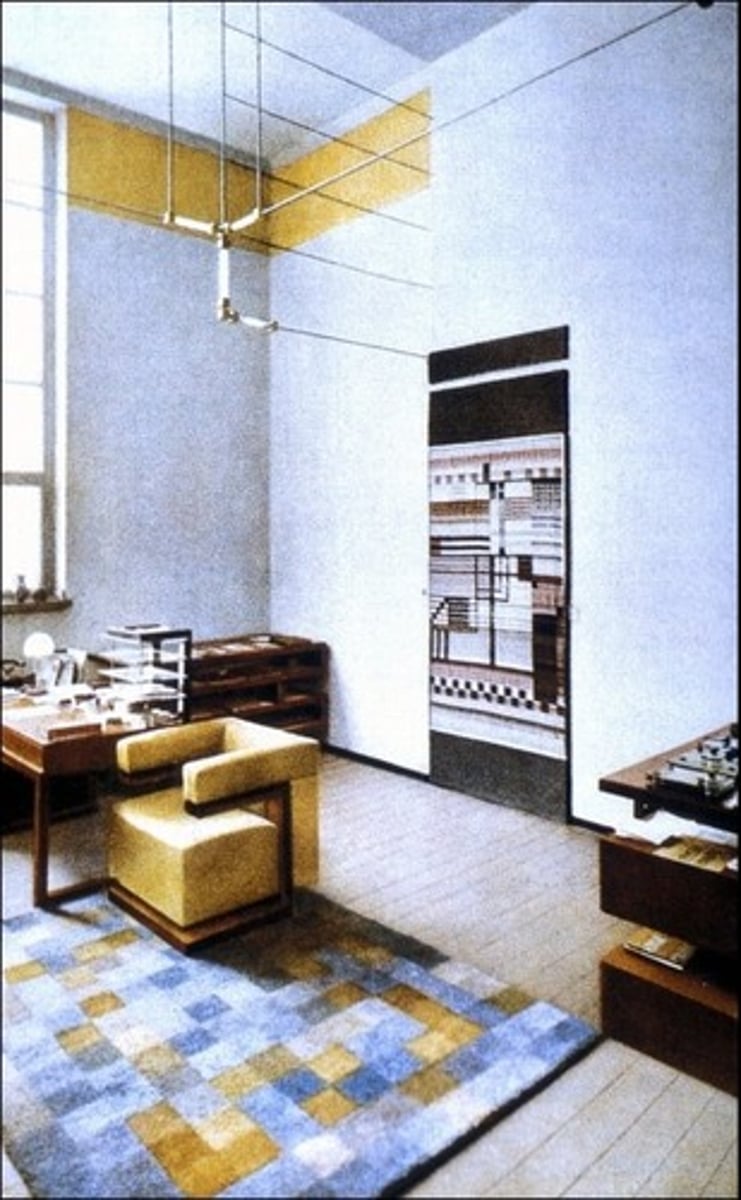
Bauhaus Building, Dessau Studios are enclosed in glass with transparent corners
Windows move, becoming semi-transparent
The building itself is only a negative form giving feeling to the space around it
"Evoking space as if clasping onto the negative"
Seen as a stage
Transparent and pure- Dustin Aaron
Less material/simplified= purity and function
!
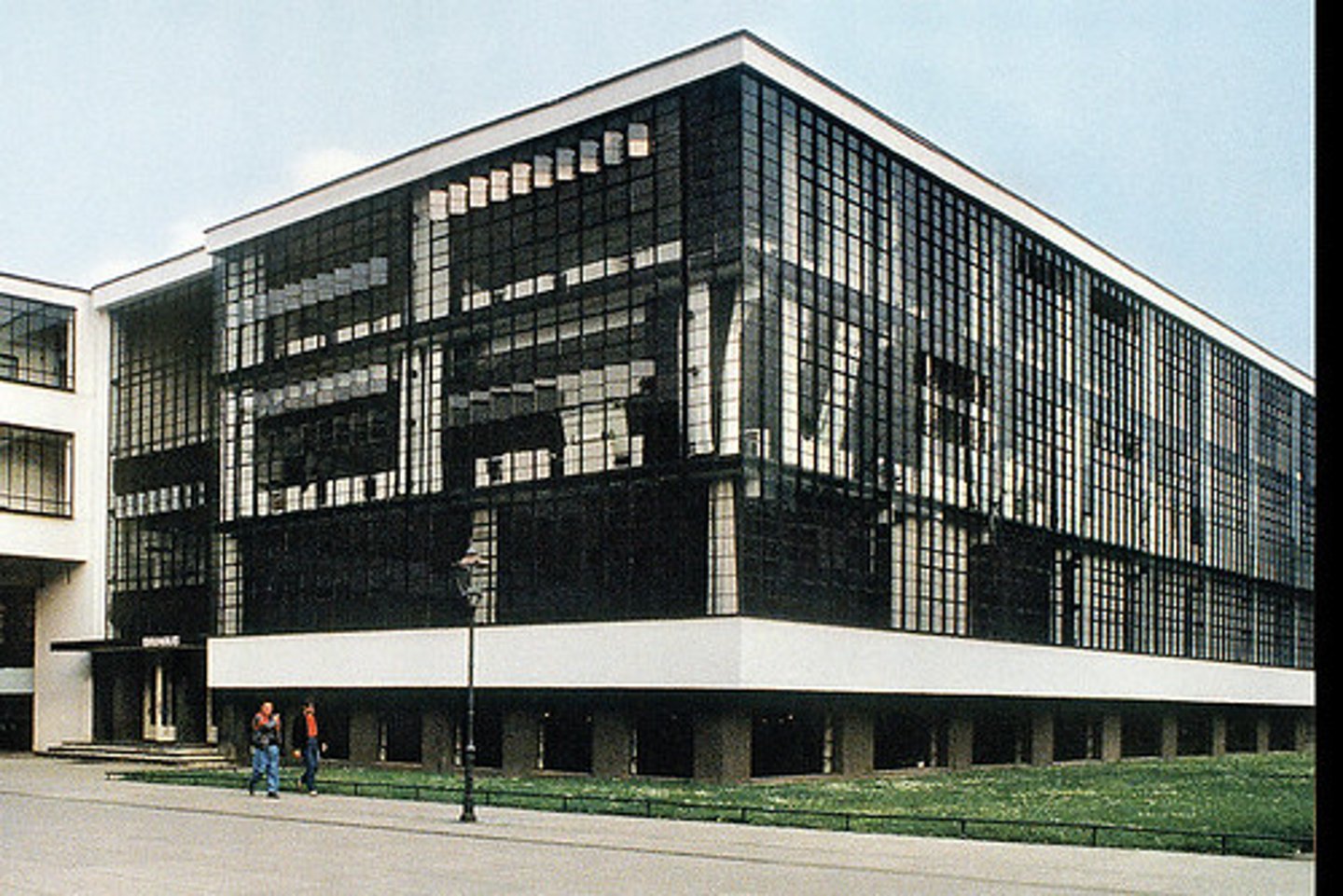
Interaction of Color The world we know is impure and inferior Wants to push us to see a more pure realm
Purpose of Alber's exercise: the body lies to you - you cannot tell what colors are the same or different
We think of the eye as being an objective organ, but it is still a part of a subjective system (the person)
!
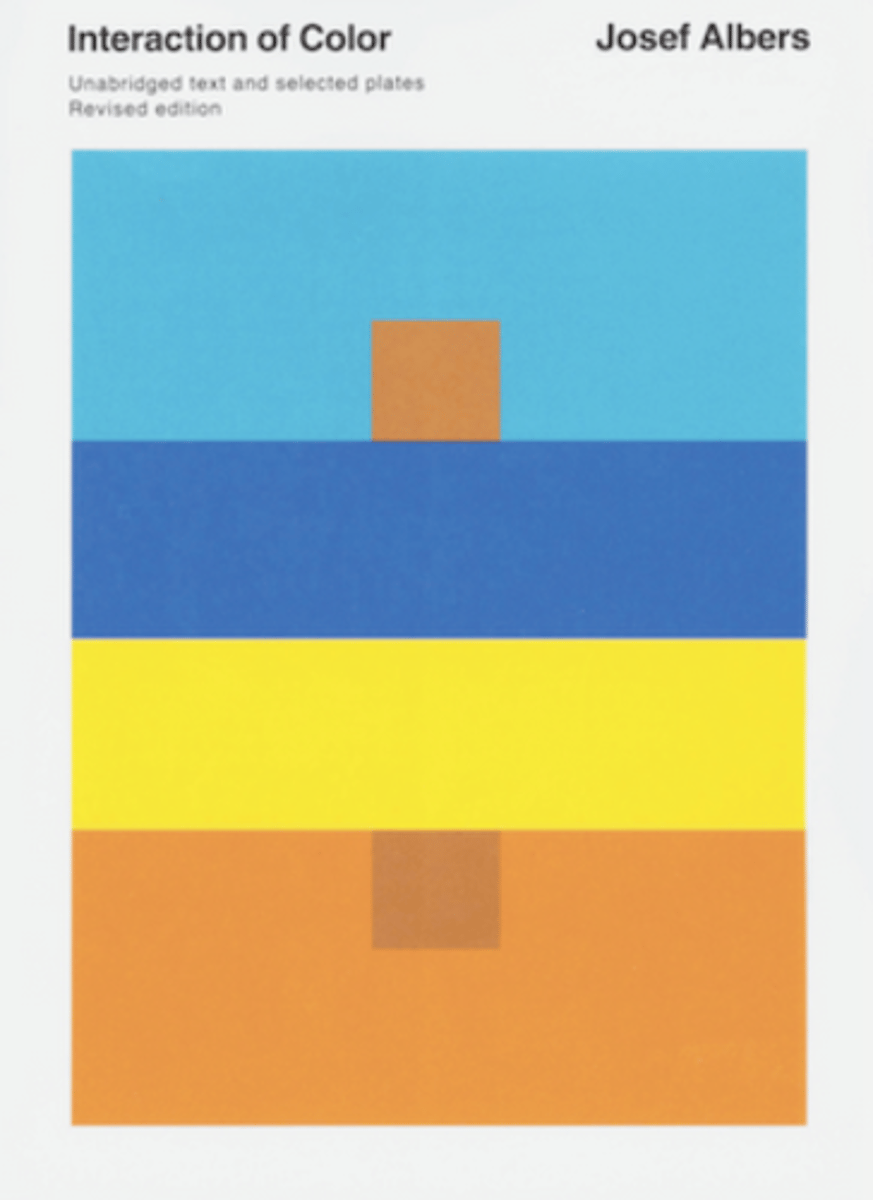
Hardware Jewelry Uses found objects - objects not fixed in the world
Lack of purity and mixing (nevertheless projects a certain kind of purity on "the other")
If we see other cultures as fixed, it gives us the power to create a hierarchy, ignore their complexities
Sees other cultures as fixed sources to draw inspiration from
At RISD, we should think of what we know and our body not as space
See movement within ourselves and other cultures and recognize the overlap between us all
!
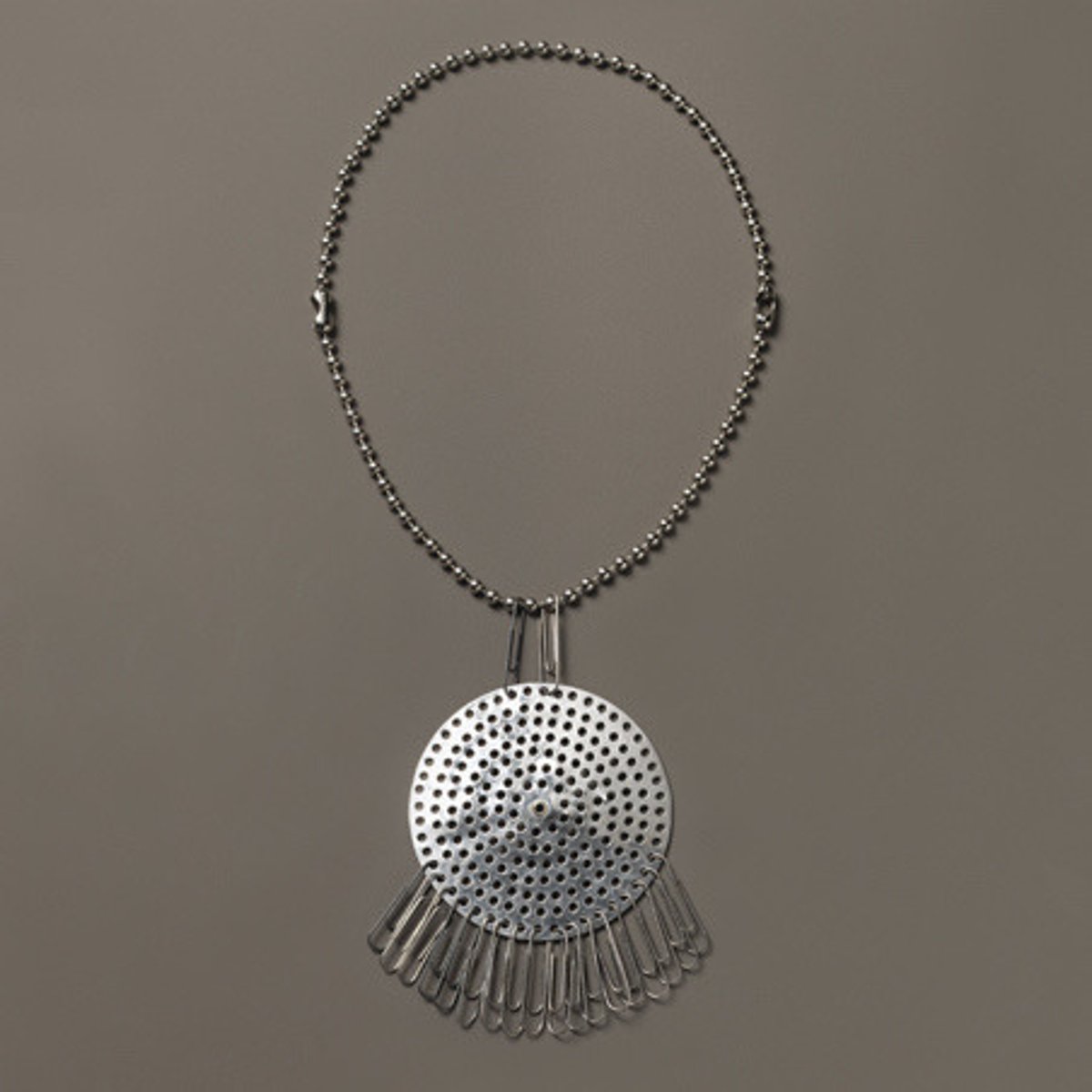
Bretton Woods Monetary Conference Western countries (ESPECIALLY the UK) extracted 45 trillion+ dollars of wealth from India 1765-1938
Nothing we can do will replace that
200 years of British Rule
A western attempt at setting up new economic rules/regulations/integration for world trade (didnt end up doing a lot)
We have global amnesia about this issue
UNPAID DEBT
!
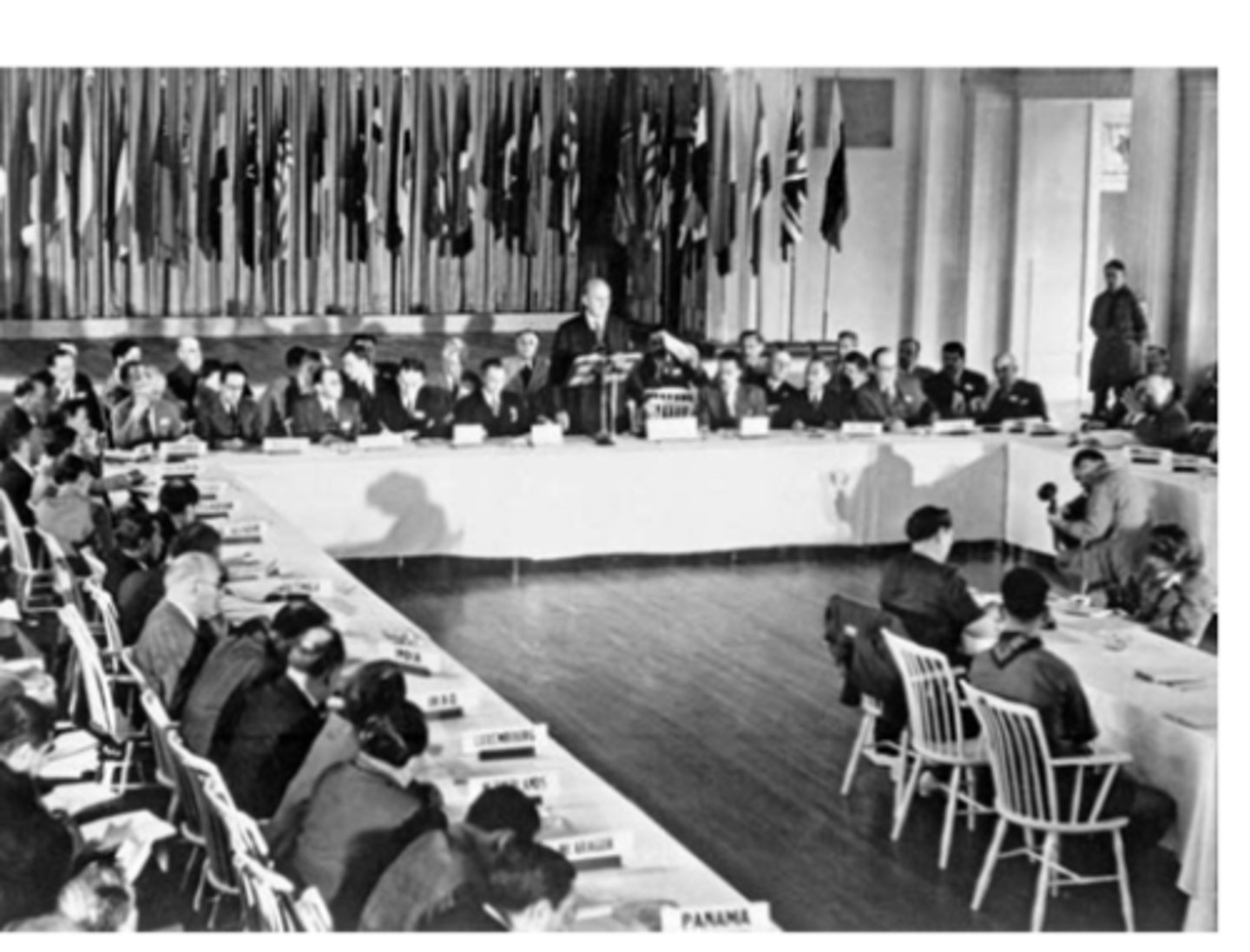
Partition of India and Pakistan Western countries created the concept of "third world" countries
Unrepresented faces of unpaid labor
Rich global economies are rich because of investment in slavery and colonialism! No profit in growth -- we don't account for the environmental cost
Focus on the two figures to the left, really analyze their conditions
So if India was supposedly independent after British colonial rule, why didn't they ask for the money back? (corruption from westerners AND wealthy elites in India)
In 1820 India's GDP was 16% of the world total, forced to grow raw material, in 1947 dwindled to 4%
Forced extraction of labor+materials=money=created economic status of countries on both ends <<basic concept
!
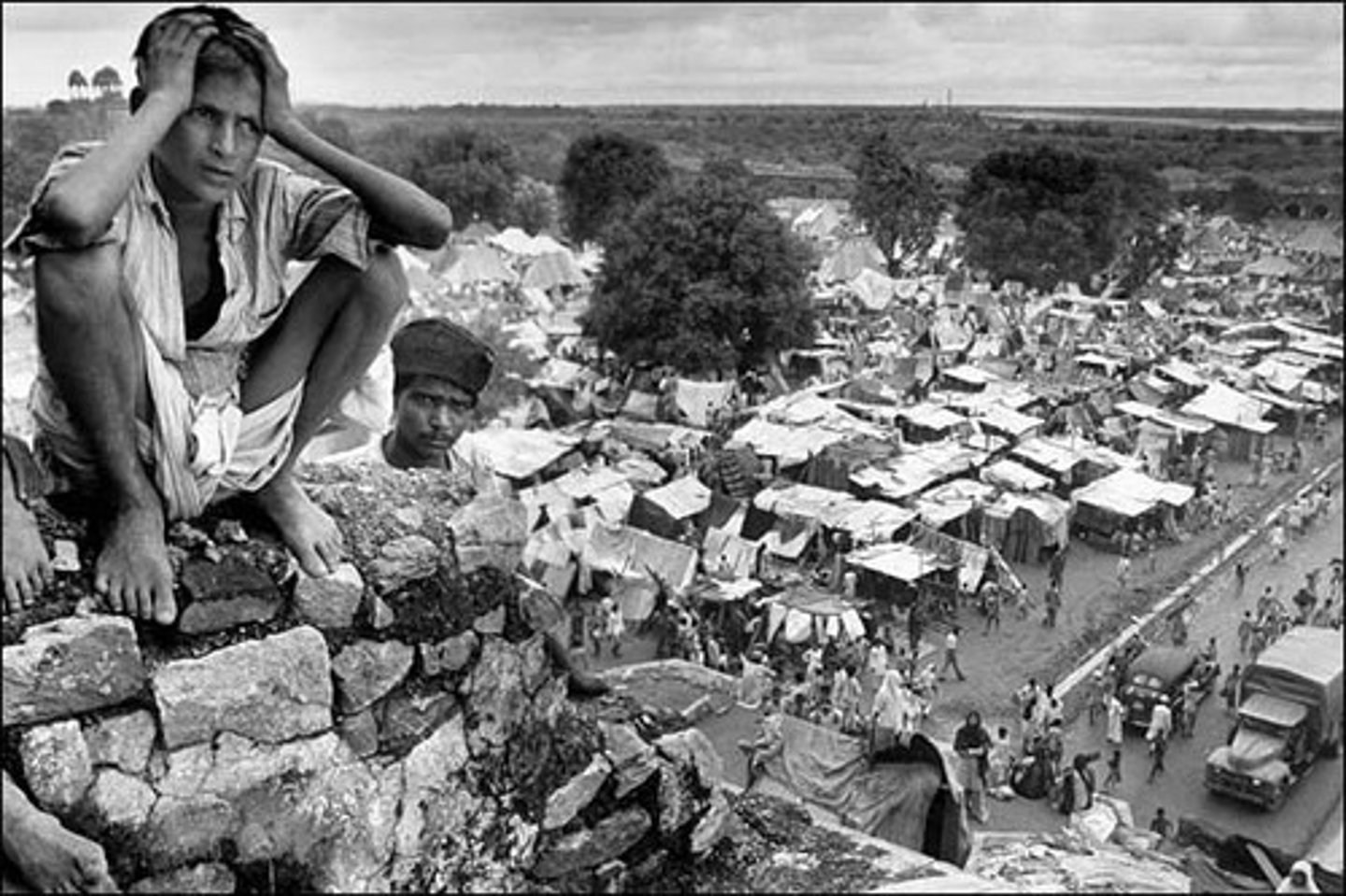
"The High Court" from Oeuvre Complete Supposed to resemble sillhouette of the Himalayas - echoing landscape People sitting there are like the invisible population of the world, they dont get to enjoy/benefit from these buildings
Brutalism
Built for the sake of "starting new", but forgetting about unpaid debt and effects of colonialism
Colonization created the nation state
!
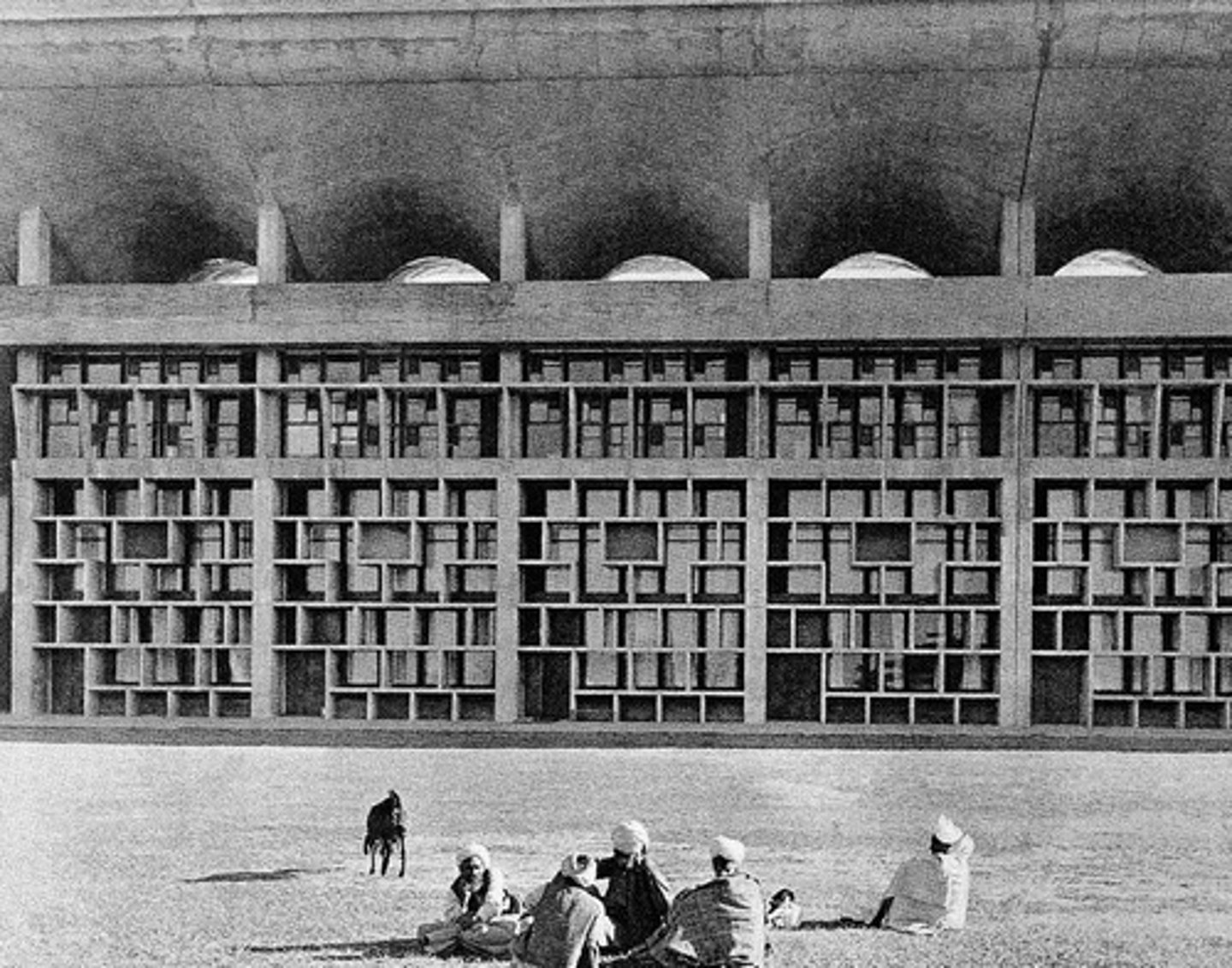
Assembly Building, Chandigarh, India Roof mimics bulls horns, familiar to the region
Built for the new nation state
Wanted to be thought of as more worldly, not in exclusion with the west
No education for architecture under British rule
Hard, angular style, abandoning clean slate
Windows blend into background
Commissioned by major leaders in India to create "modern" building
Essential question: why didn't they just hire a local Indian architect
The country's leaders wanted to make a modern impression for others There were lots of prominent and influential independence leaders for "third world" countries
This building MADE Le Corbusier
Concrete is the largest global export in the world and its not even COUNTED as an export (Fishy exploitative business)
Catering to global capitalism, not even for people to live in
!
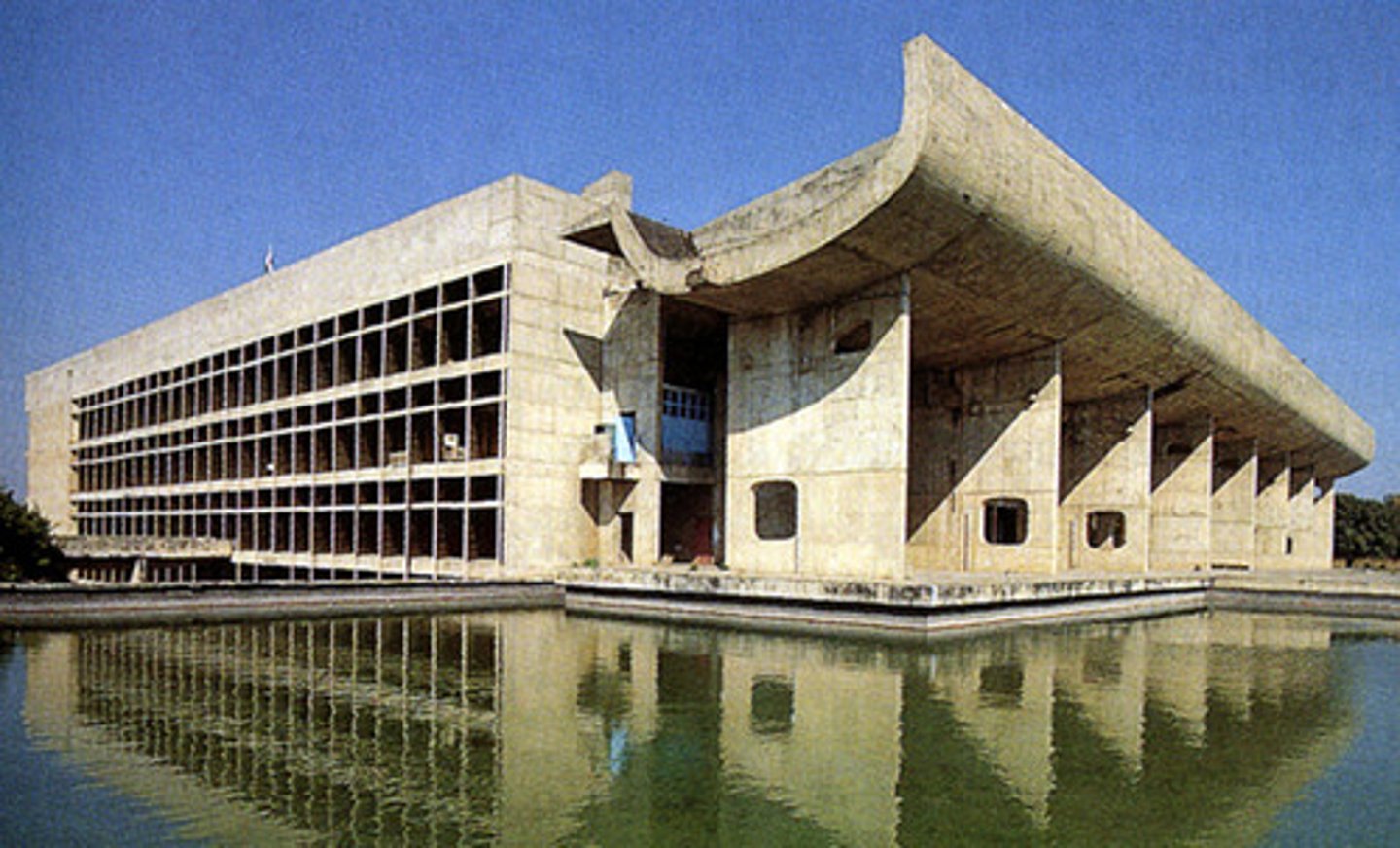
"Chandigarh, Capital Complex, construction photograph" Figure to the left signifies that creating this building was like India climbing up a ramp of progress
Her face is not visible -- represents exploited workers
Displacement as ****
Capitalism, colonialism, and slavery (important)
TAKEAWAYS: architecture is ALWAYS political
How can we make these people visible?
people/tribes that were displaced by building the capital WERE the people building
Subaltern, faceless, invisible tribes of individuals that were living on the site of the new capital, removed, didn't benefit from it -dustin aaron
!
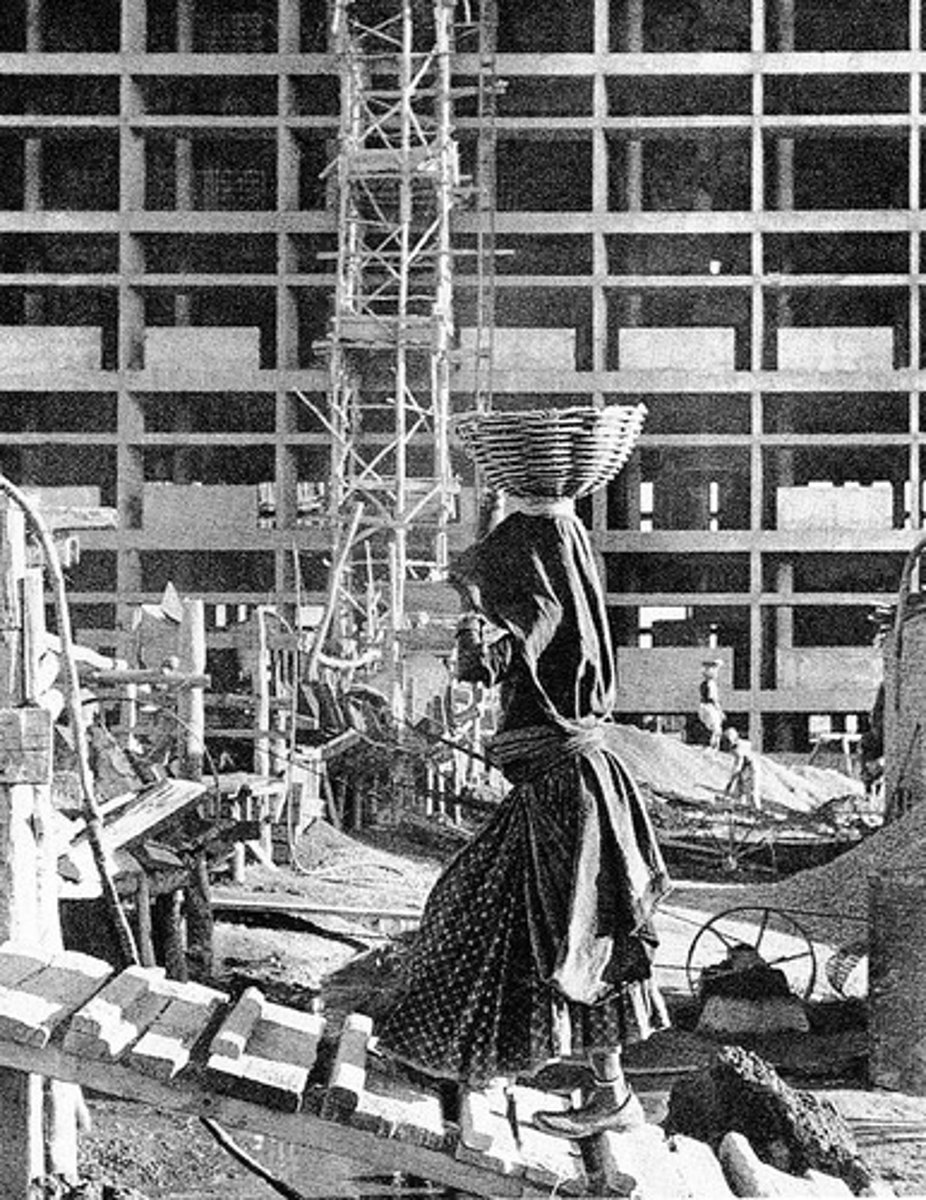
METI "Hand-made" School, Rudrapur, Bangladesh Winner of MoMA exhibition, used limited budget and compacted mud for cost-saving
Seen as a model of local materials and community participation Emphasizes keywords: "Community," "Local Materials," and "Self-help."
Community required convincing, prompting examination of displaced tribal groups in Rudrapur (British laws)
Some displaced people needed to resort to stealing bamboo →
Lack of historical understanding led to unintended consequences
Highlights the need for designers to recognize social issues in their interventions
Caution against using native informants as propaganda; Not everyone benefits from foreign interventions
!
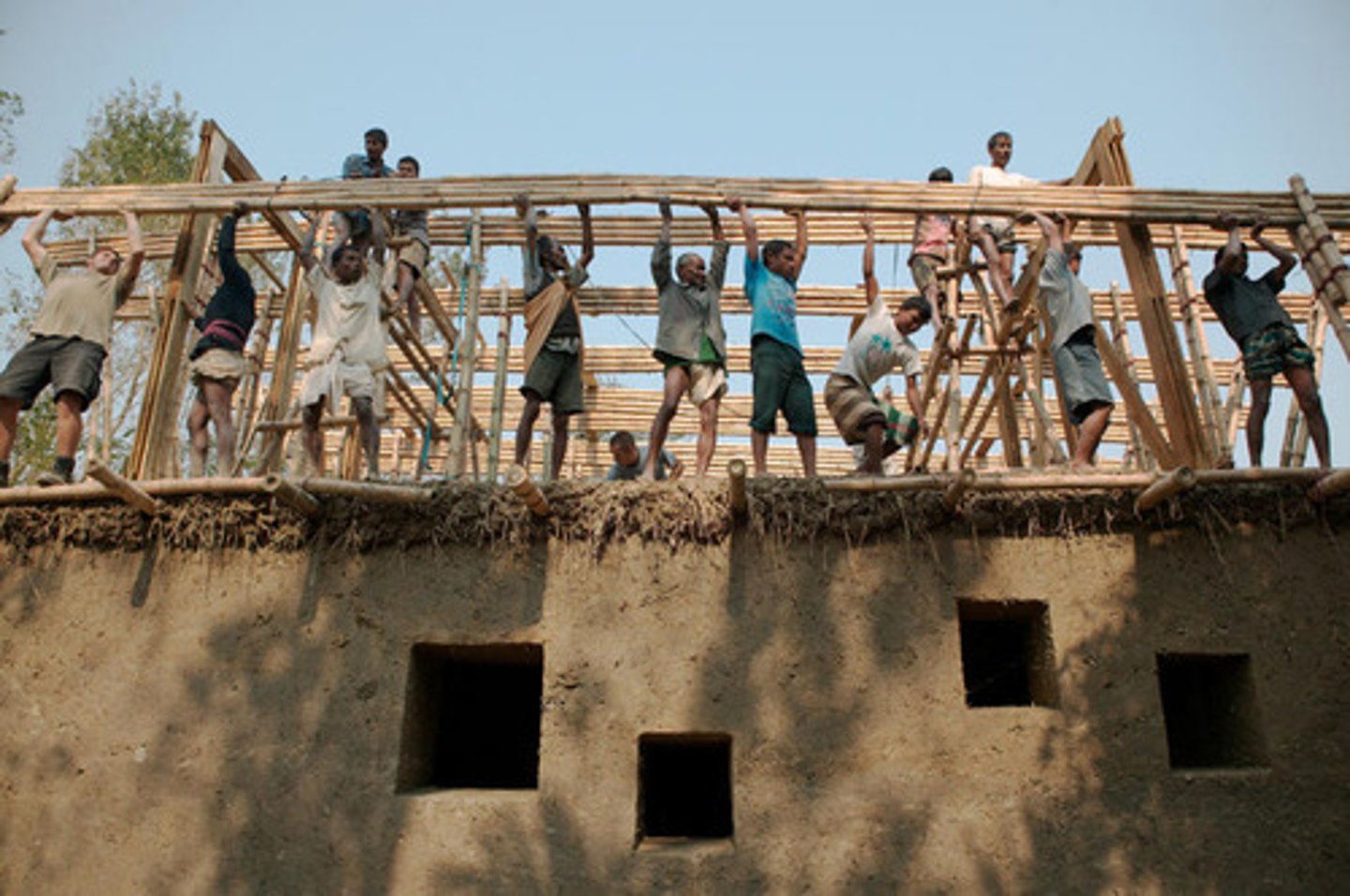
Map of the Scramble for Africa (Africa before the Berlin Conference and after) Creation of "native authority" Colonizers imposed new structures on indigenous tribes, leading to division and control
Forced movement of populations to control labor and the disruption of traditional social structures
Need to recognize the complexities of community dynamics in Africa -- School at Gando (it's creation involved individuals from different tribes, challenging the notion of a unified "community")
Advocates for acknowledging and addressing divisions introduced by colonialism rather than erasing them
!
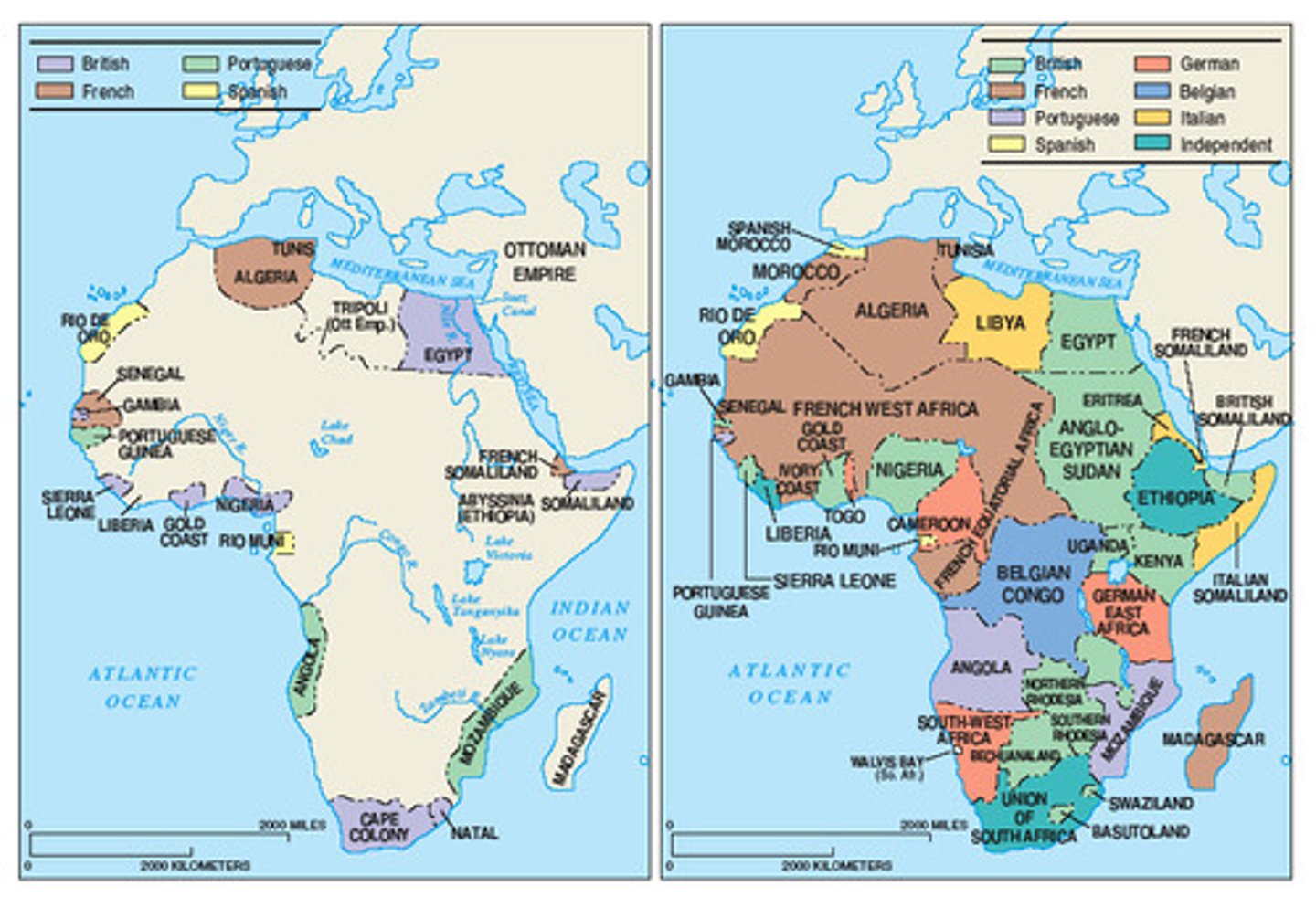
"Lagos" in Mutations Koolhaas's approach suggests that everyone is creative -- lecturer challenges this notion, Creativity is a privilege and not universally accessible (to communities oppressed by colonialism and poverty)
Reflects a critique of capitalism's pace and its influence on architecture, emphasizing the need to adapt to global transformations
Koolhaas advocated for repurposing incomplete projects to maximize resource use and proposed that the West should model its architecture on this flexibility of interaction
!
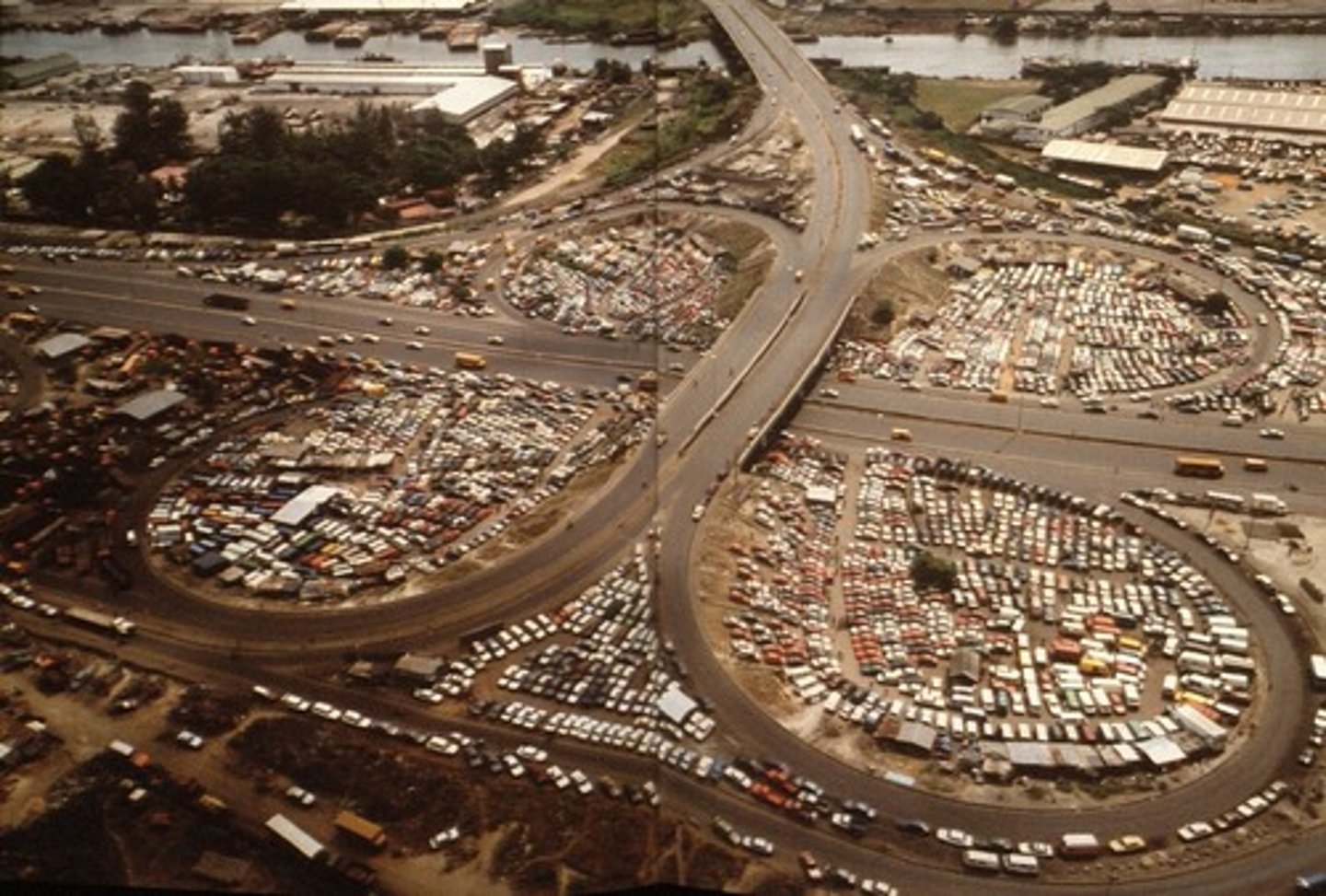
LifeStraw Created for Americans/the West
Transformed into a solution for children in Africa
Effectiveness is hindered by practical challenges (strength and lung capacity)
What are the true intentions behind such solutions
"Why should we give them clean water when they have this straw?" - problematic nature of assuming one-size-fits-all solutions
A broader issue: the delay of systemic change due to imposition of insufficient solutions
Serves more to alleviate the conscience of Western societies than to genuinely address the needs of the communities
!

GravityLight Promoted as a device to help communities in need (those who rely on kerosene or candles)
However, this ignores the desires of the people We do not light our houses with harsh LED lights Relates back to LifeStraw - half-baked solutions that alleviate our desire to help those in need, but then excuse us from creating better solutions that actually equal the playing field
"Simplifying desire, simplifying people, simplifying solutions"
!
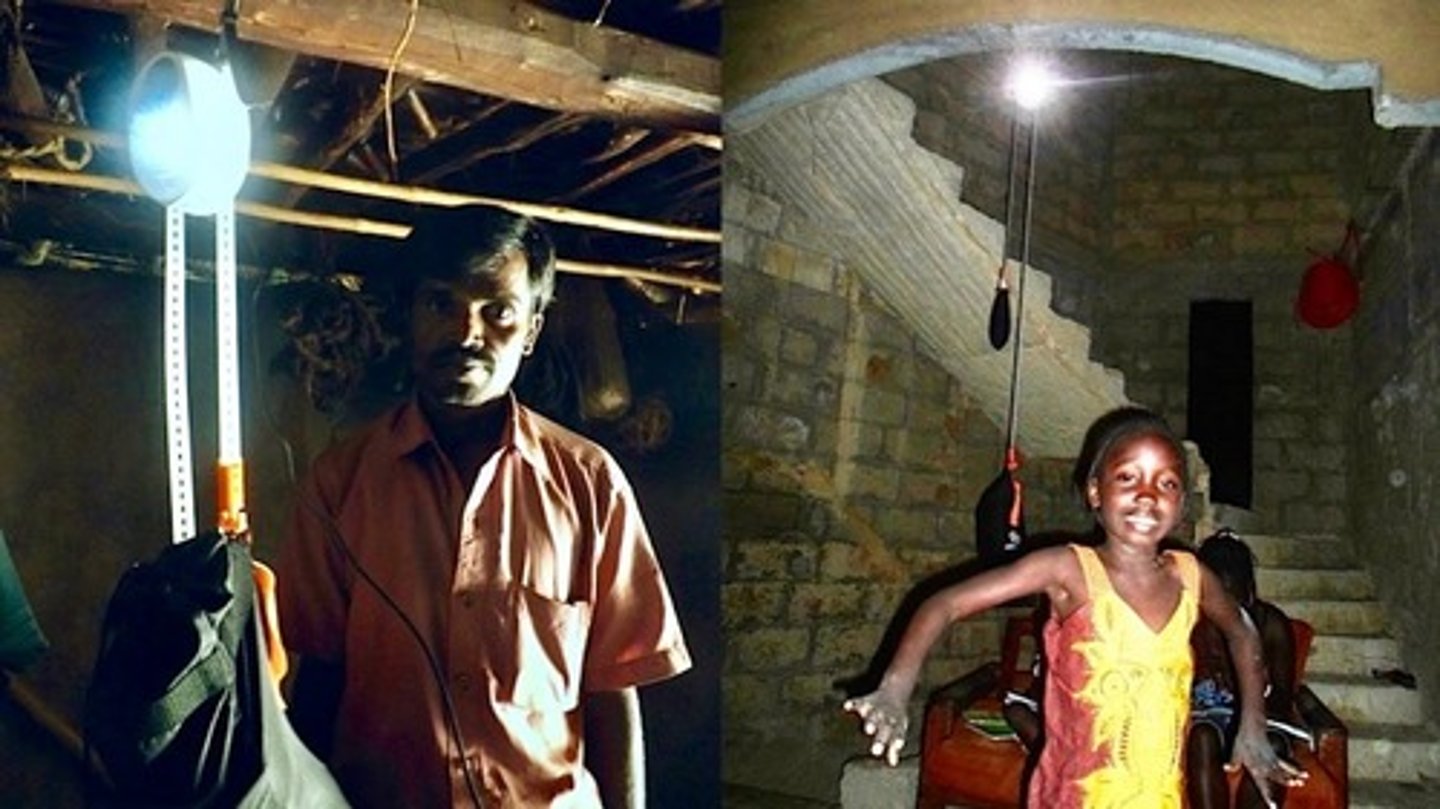
Pyrrhic Defeat: A Visual Study of Mass Incarceration
A different type of archive
This is an assemblage of graphite drawings done of people who were incarcerated alongside Loughney - under surveillance, he would have to do these quickly (20 minutes each)
(From Koji:) What he found noteworthy - creating the archive with those that he shared this condition with
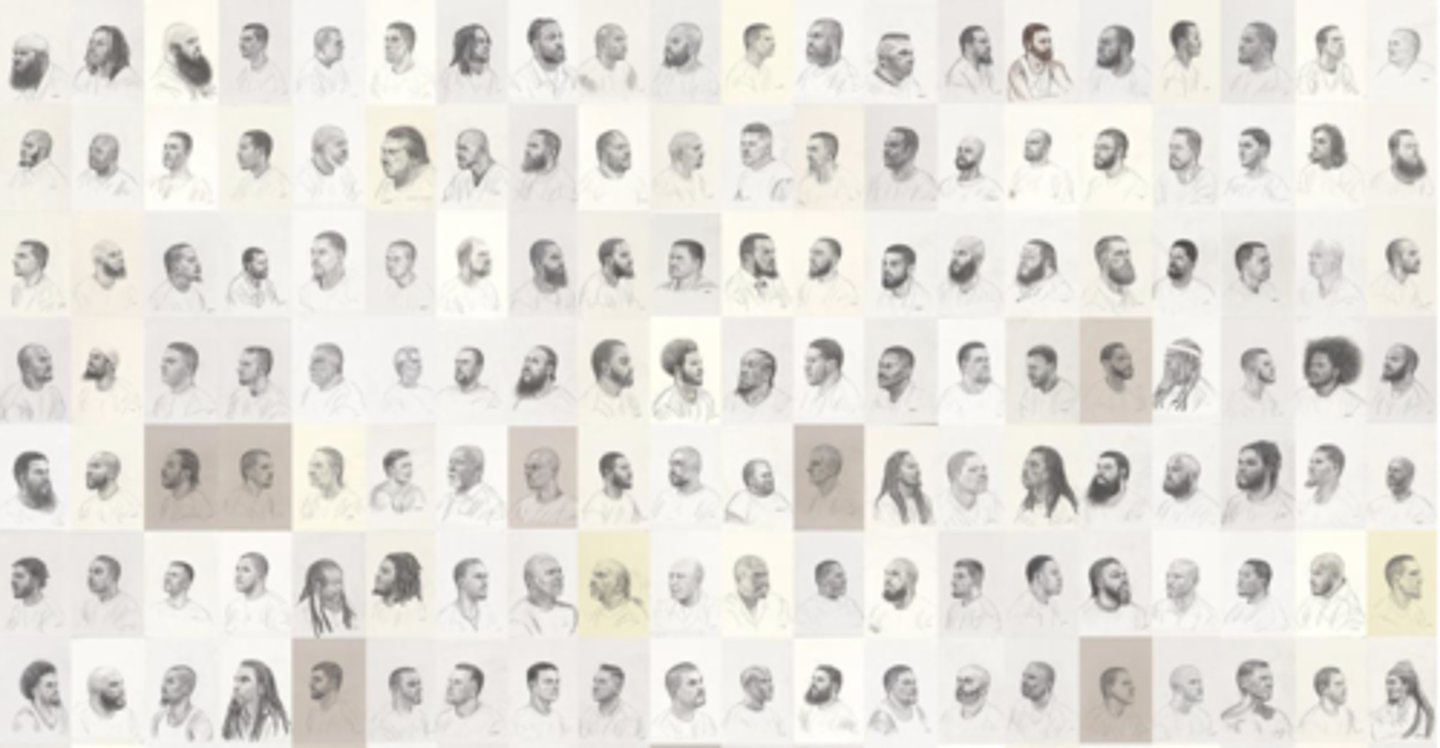
International Coalition of Sites of Conscience Founded 1999
Focuses on sites of difficult histories that are being confronted at the site
Used a platform for tough conversations about the present
Not content to bury questions in the past as some preservation does
Themes of immigration, genocide, historic slavery, contemporary slavery
This is an important development in the field of preservation
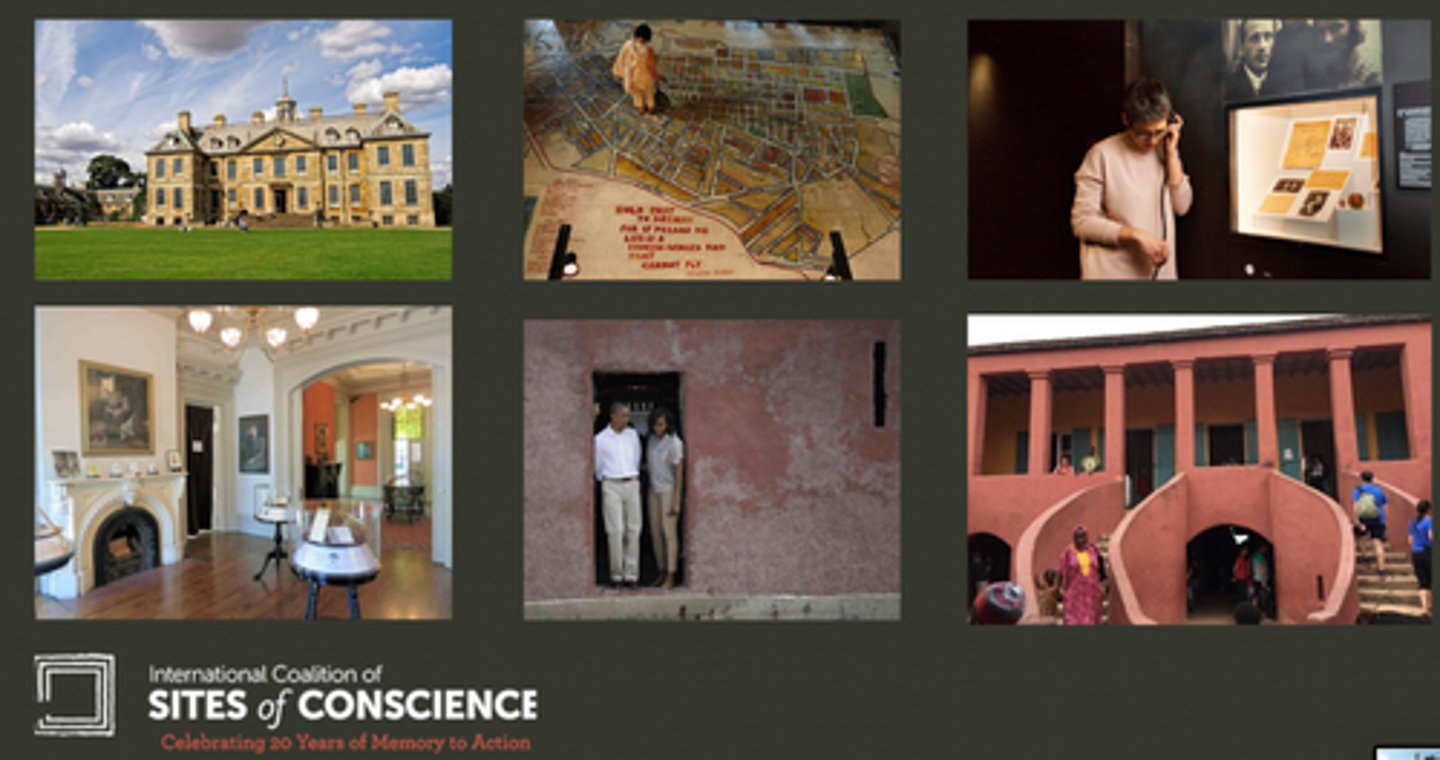
"Creamware" Dinner Plate
Wedgwood was one of the most successful ceramic companies
"Luxury ceramic production"
Has some of the material qualities of porcelain, but it's not quite as light and delicate
Creamware was created using labor-saving techniques
Could produce all manner of patterns relatively quickly
Uses the division of labor to create these products
The actual work being done has limited value - "the man is just a machine"
Image: John Flaxman, vase with Apotheosis of Homer
Flaxman created designs for Wedgwood modeled after ancient Greek imagery ("the first industrial designer")
Hiring artists to create blueprints for production - led to how we consider design today as a separate process from the rest of the making and somehow above the process of making
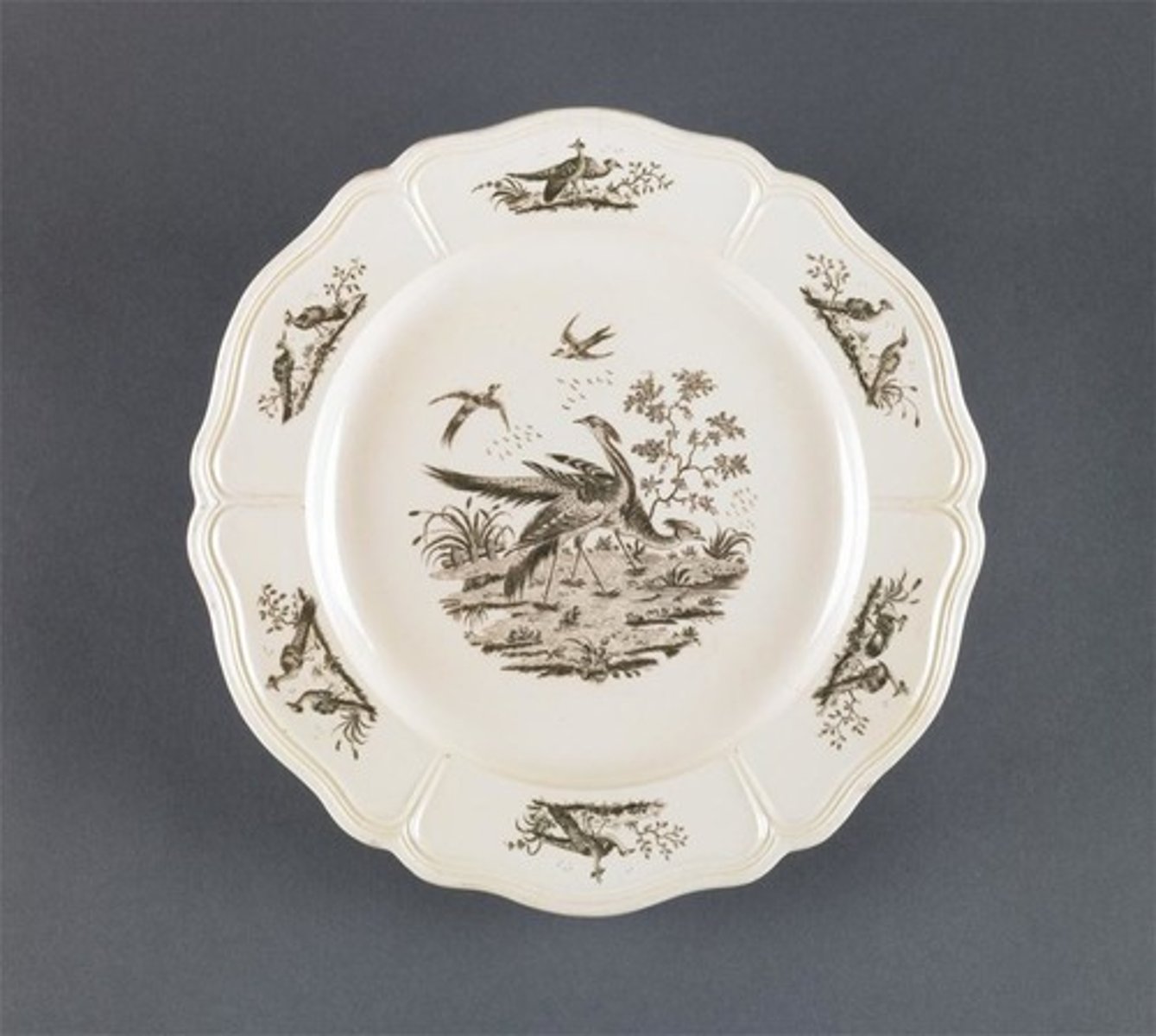
Chintz bed hanging
Made in India for British export
Made using mineral salts, decorated using resistance process (uses wax)
Fabrics used for decor, bedspreads
The popularity of clothes like these motivated the Industrial Revolution - manufacturers wanted a piece of the money
Image: Furnishing Fabric
Chemical dyes, roller printed - cheaper, meant to imitate the chintz hanging but it's not quite as complex
Image: Industry and the Indian Economy
The slow way of making that is central to India's culture of craft is effectively decimated with colonization and industry
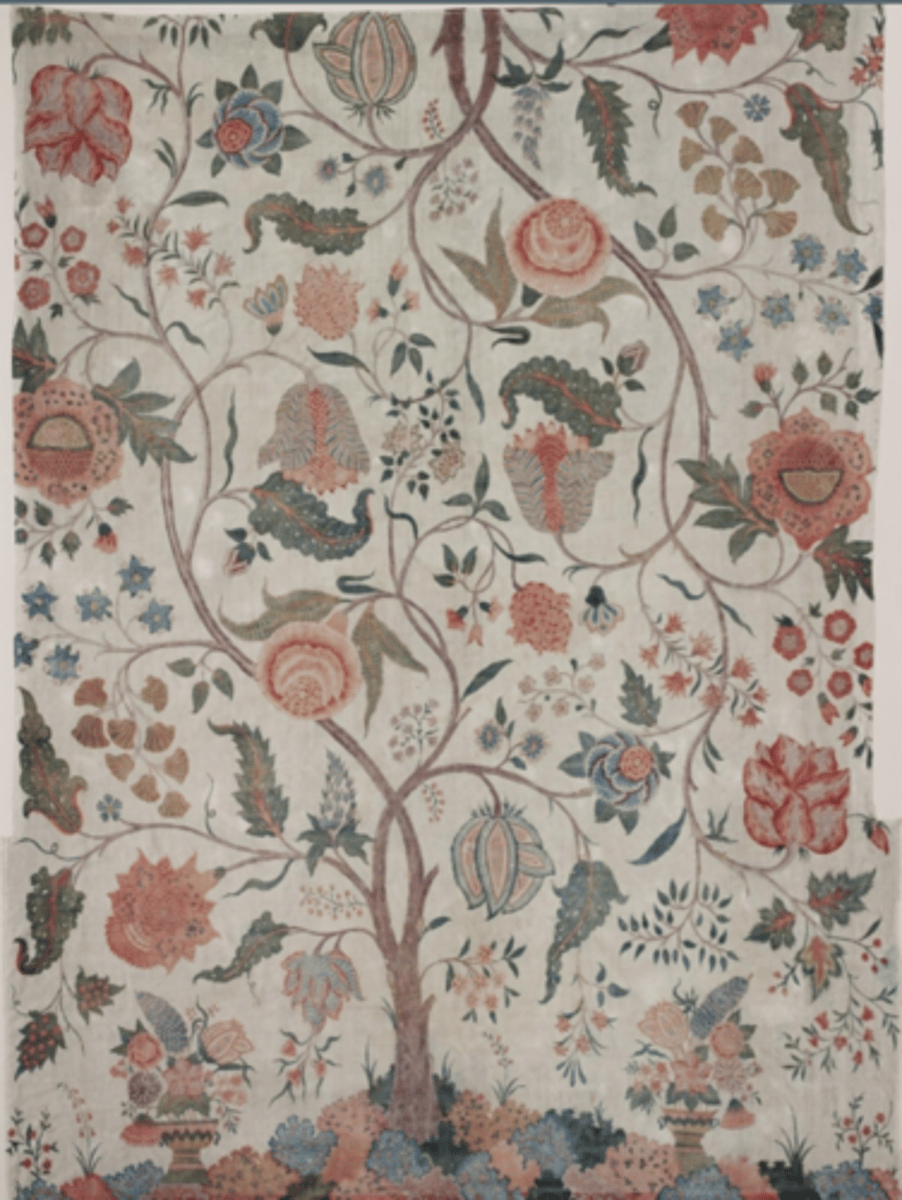
Morris and Co. Pine cabinet
Arts and Crafts Movement, critique of industrialization on art, design,&society. claimed it reduced the quality of good and people's lives.
Proposed return to pre-industrial forms of manufacturing-Medieval
Ruskin, a founder of the movement, wanted "complex irregularity" brought back to design. Imagined that people making these were happier than modern manufacturing. "man not intended to work with the accuracy of tools, to be precise and perfect in all their actions, If you will have that precision out of them...you must unhumanize them"
Morris wanted to bring ideas together, created company designed to model creation of small medieval workshop. Produced work in small batches. Pine cabinet with leather, paint, copper. Morris trained in practices of handcraft. Evoke Middle Ages with certain suggestive details. Deliberately irregular& rough, evoke a world of craft&small-scale, skil
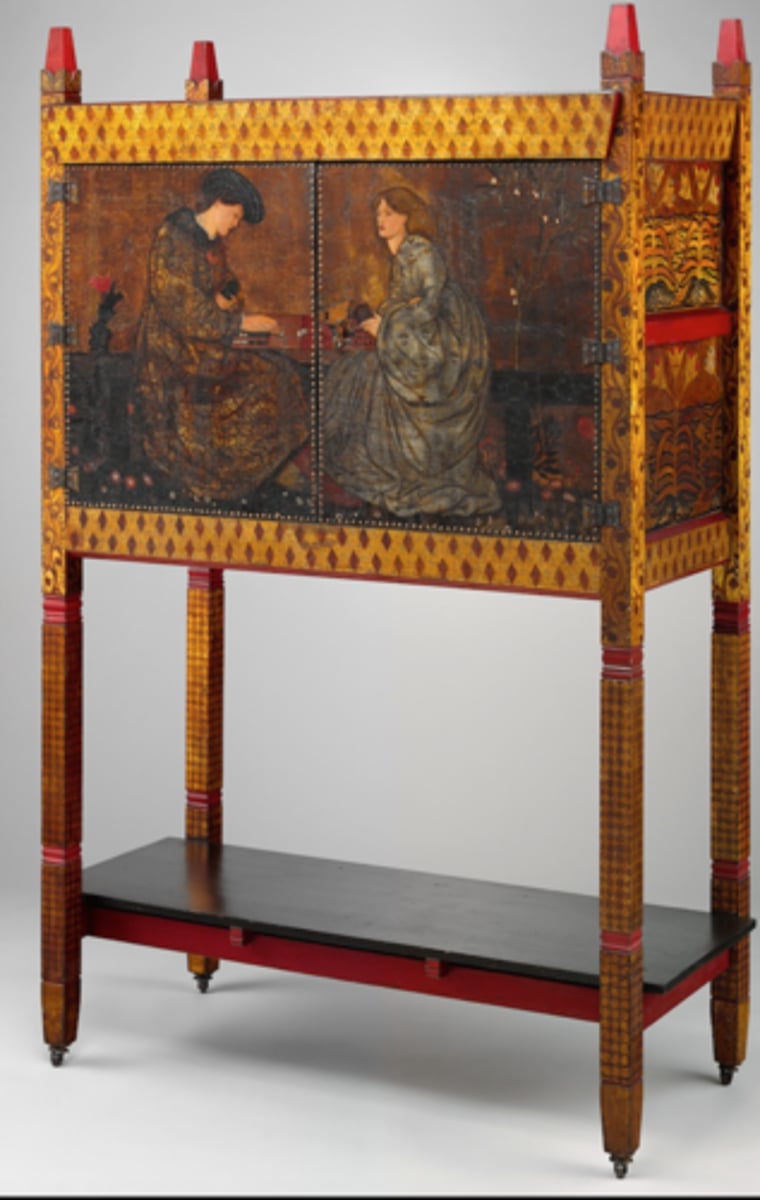
Poster for the Haripura Congress
The Haripura Conference
This conference promotes the reestablishment of a craft-economy for India's independence
Posters of craft by Nandalal Bose
Depicts craft as a physical process, engaged with body and tools
Uses the idea of craft as an antithesis to industry, involving skilled work, engagement between body, material, and tool
Craft as an idea that has specific historical and political origins
Promotes the possibility for future iteration and creativity
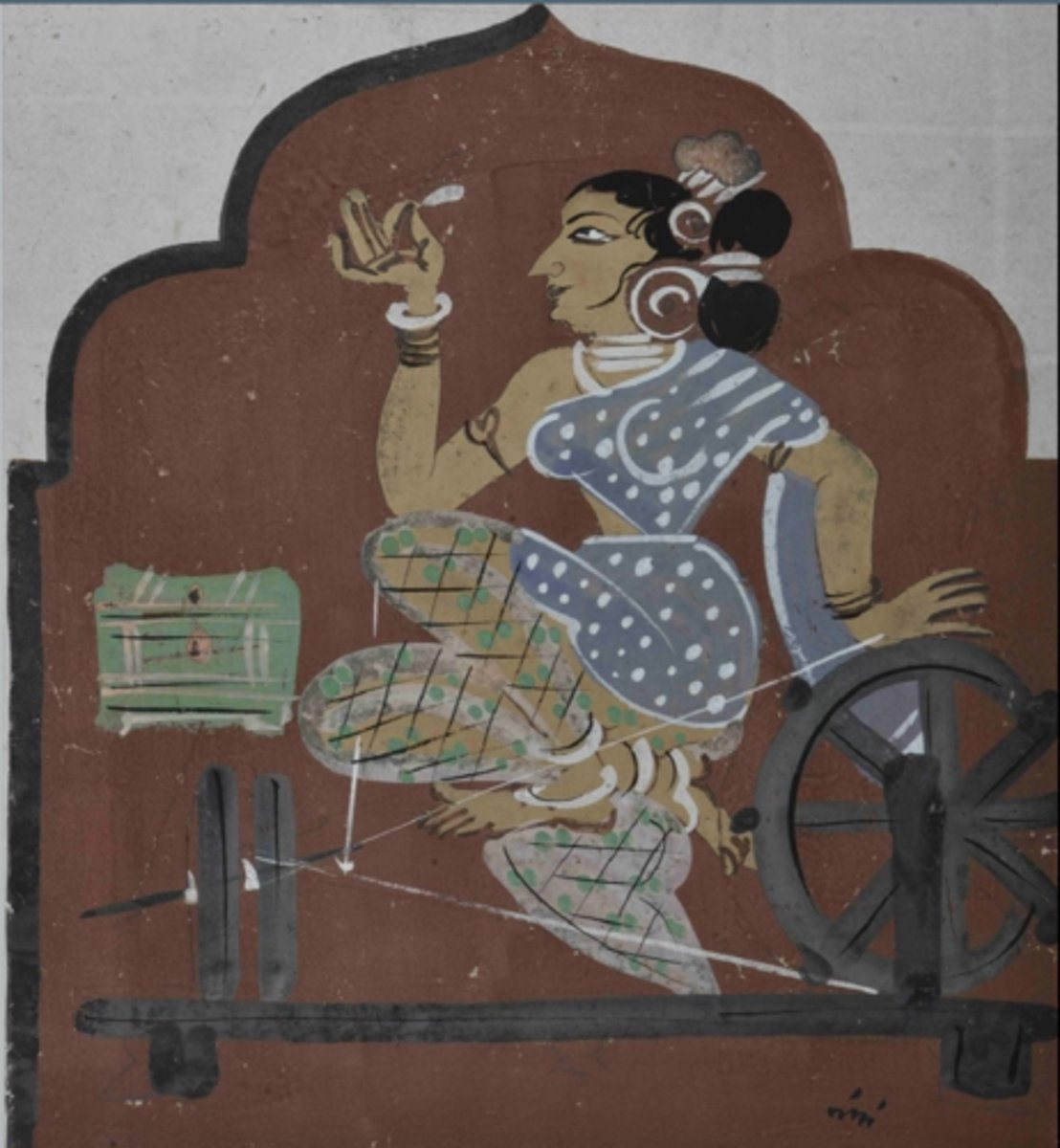
"Gandhi and the Spinning Wheel"
Gandhi believes strongly in the importance of Indian craft
Britain creates economic dependence of India, hurting their ability to make craft
Part of the independence movement is reintroducing the role of craft and becoming economically independent of Britain
Image depicts Gandhi surrounded by craft, wearing a hand-woven cotton cloth, and sitting near a Charkha spinning wheel (these become symbols of Gandhi and the independence movement)
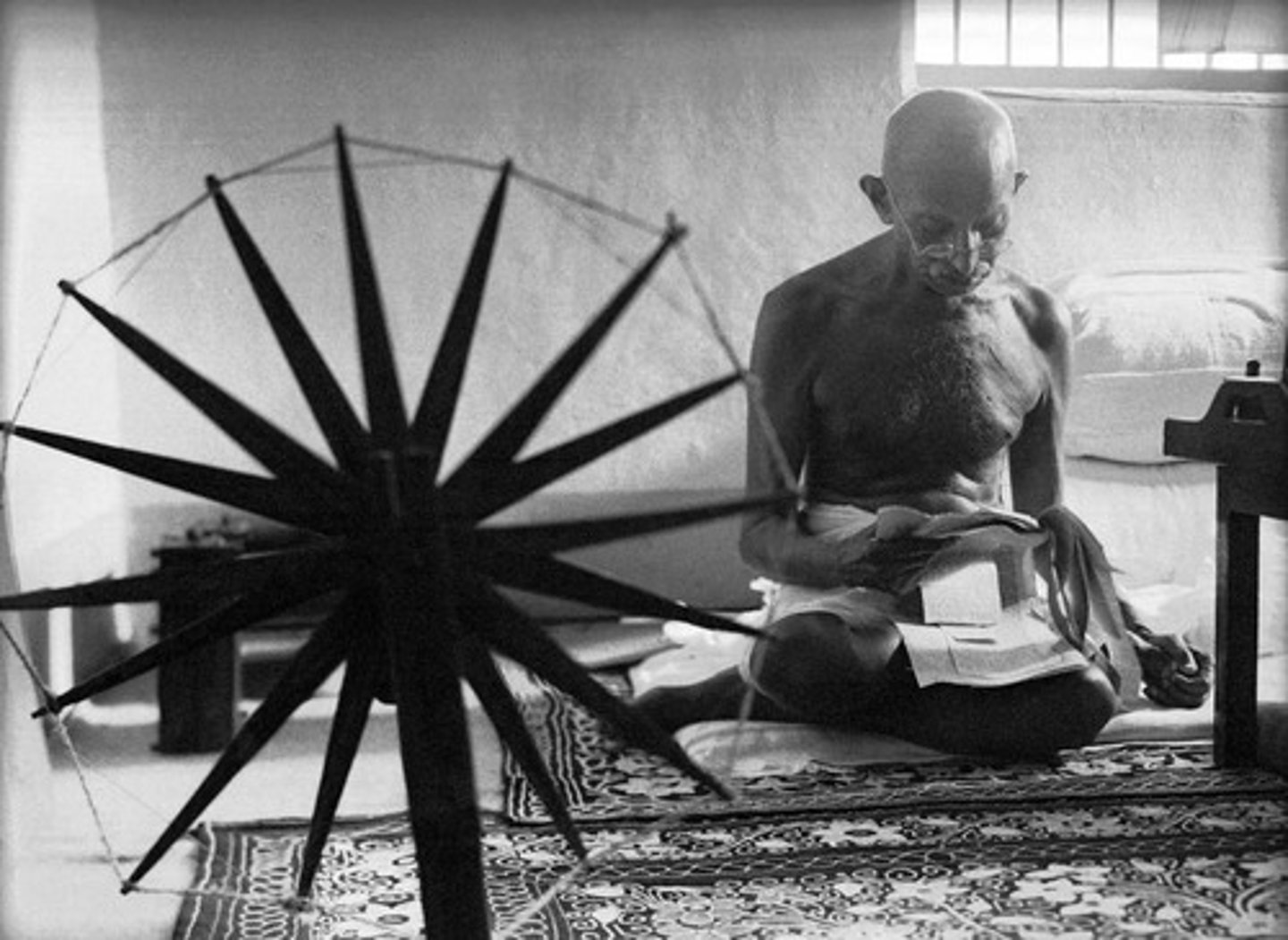
Poster from The American Negro Exhibit
Data visualization, infographic
Purposely designed to be geometric, uniform. Text at top describes what the graphic is represents. Visual rep tells the viewer info, intended to bring us into the history of black property ownership.
Du Bois, writer and activist for AA rights. First AA to receive a doctorate from Harvard, attended the first black college in the US
World's Columbian Exposition
Du Bois commissioned to design this graphic for the World's Fair, intended to rep achievements of white society; called "White City"
Midway was a section of the fair for people of color
It was deliberately more dense, less ordered - communicated ideas of racial hierarchy
Du Bois wanted to exhibit a different, more accurate image of black life in America. Included art, artifacts, data visualizations, organized precisely to give authority, academic importance to his portrayal of bl

Information graphic ("Working Population of the World")
Isotype system intended to speak across boundaries of race, class, and time. Does this image really act as a form of universal communication? Determined that it is clear that the production of goods is communicated
Image: "Working Population of the World", Society and Economy, Arntz
Figures represent statistics of laborers using colors and symbols, different kinds of workers divided into a grid
Primary forms&colors, convey statistics of different parts of the world. Certain level of legibility across boundaries in this work
"The question of an international language has now become important. There are a number of signs pointing to a great development of an international organization in the near future - though we are living in a time of warring interests and broken connections"
Book was written on cusp of period of optimism& progressivism as WWII was e

The "White Room"
IBM: Computer design, creating computers for big corporations
IBM, Noyes and Associates
IBM starts to get really into design and hires Noyes
These designs are much more "modern" - more pure, more controlled, "visual control"
He made these computers neat and tidy, with primary colors, to make them much more approachable
The "White Room"
An exhibition of computers - shown in this easy, "frictionless" way, making them seem more legible and appealing
Space is under control, purified
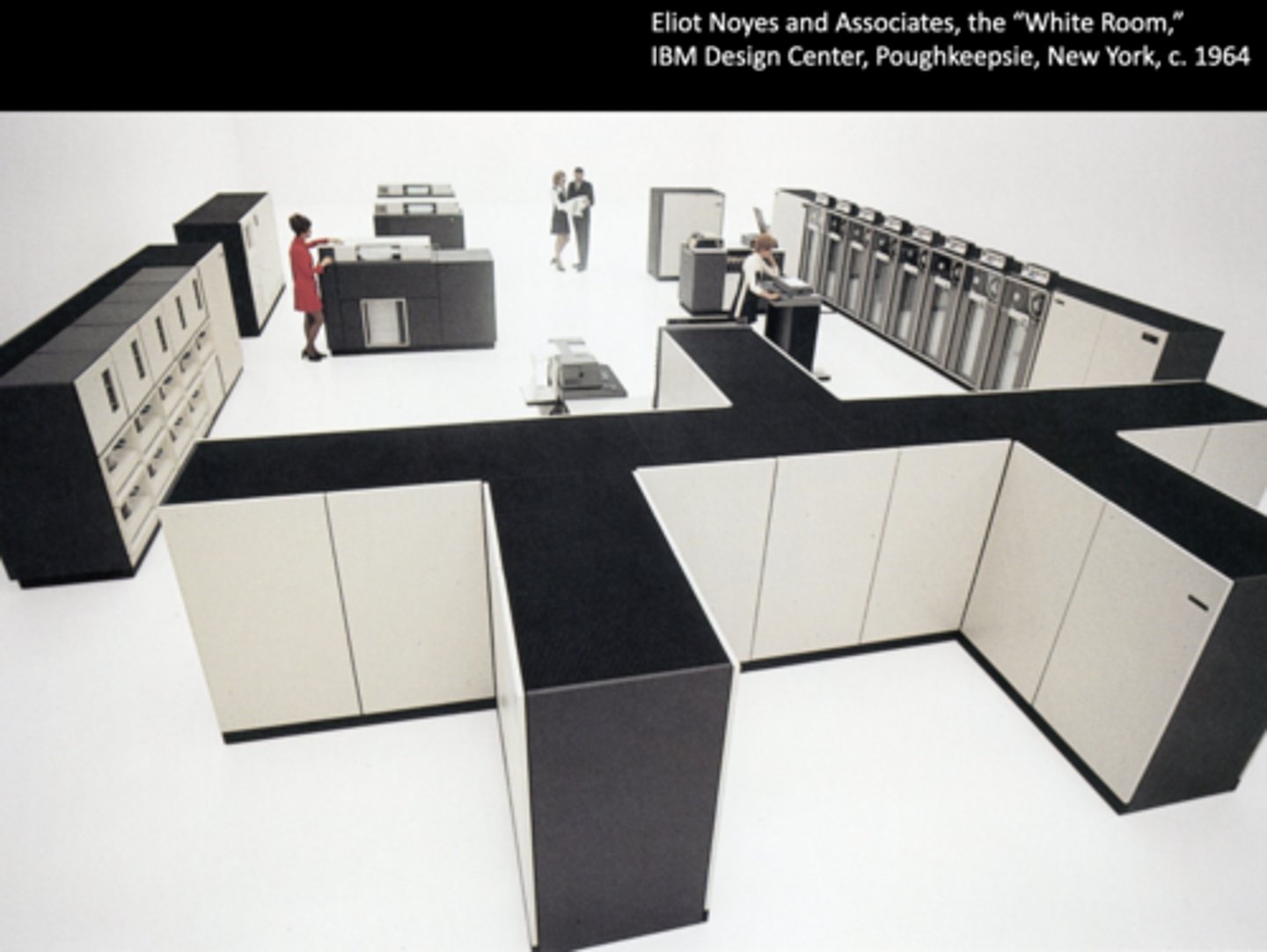
"Think" film
New York World's Fair
Eames took a different approach - they brought out the strangeness, futuristic form of computers (it looked like an egg? lol)
Used labyrinths to evoke a sense of spiritism and mysticism
Image, Video: IBM Pavilion
Included a sort of amusement-park-like ride into a theater in the egg
On a projection screen, Eames showed a multi-screen projection of images, lights, color, and imagery, all flashing and changing quickly
This film was meant to represent computer operations (like viewers are inside the computer)
In this way, computers are not objects (Noyes design, highly controlled), but an entity (Eames design, more strange, "magic")
Both of these intended to make computers more appealing but in different ways
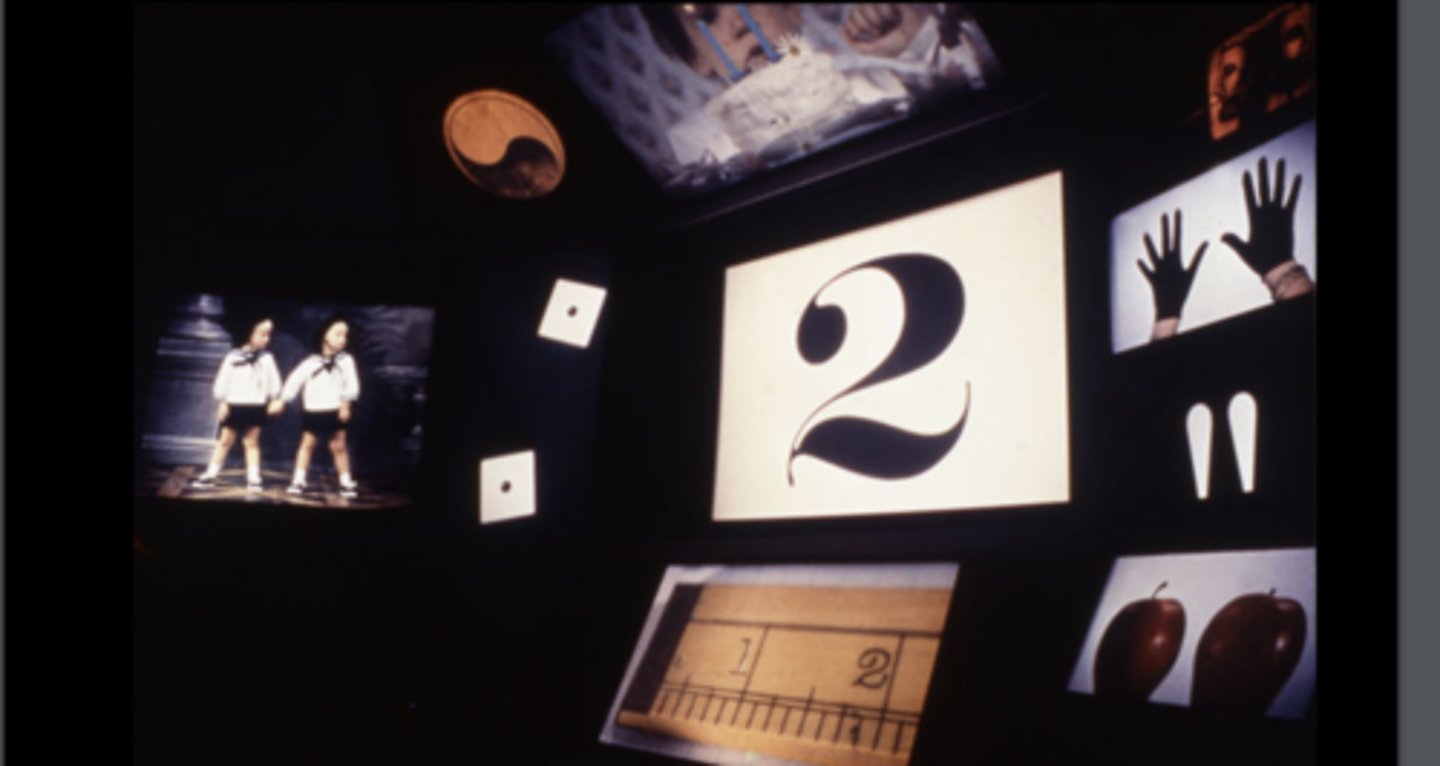
Cybersyn Opsroom
Chile, Cybersn
A network of information transmission between Chile's capitol and sites of operation in order to ensure productivity
Cyberson Opsroom
"A very elegant, comfortable interior design"
Lush chairs, space-age, cooperative management style
Screens would show data in abstract, modernist language (primary colors, simple geometric shapes)
Management could press buttons (LOOKS LIKE BAUHAUS PRIMARY FORMS + COLORS)
Using design to open up a system of data processing and usage that transforms and crosses class boundaries
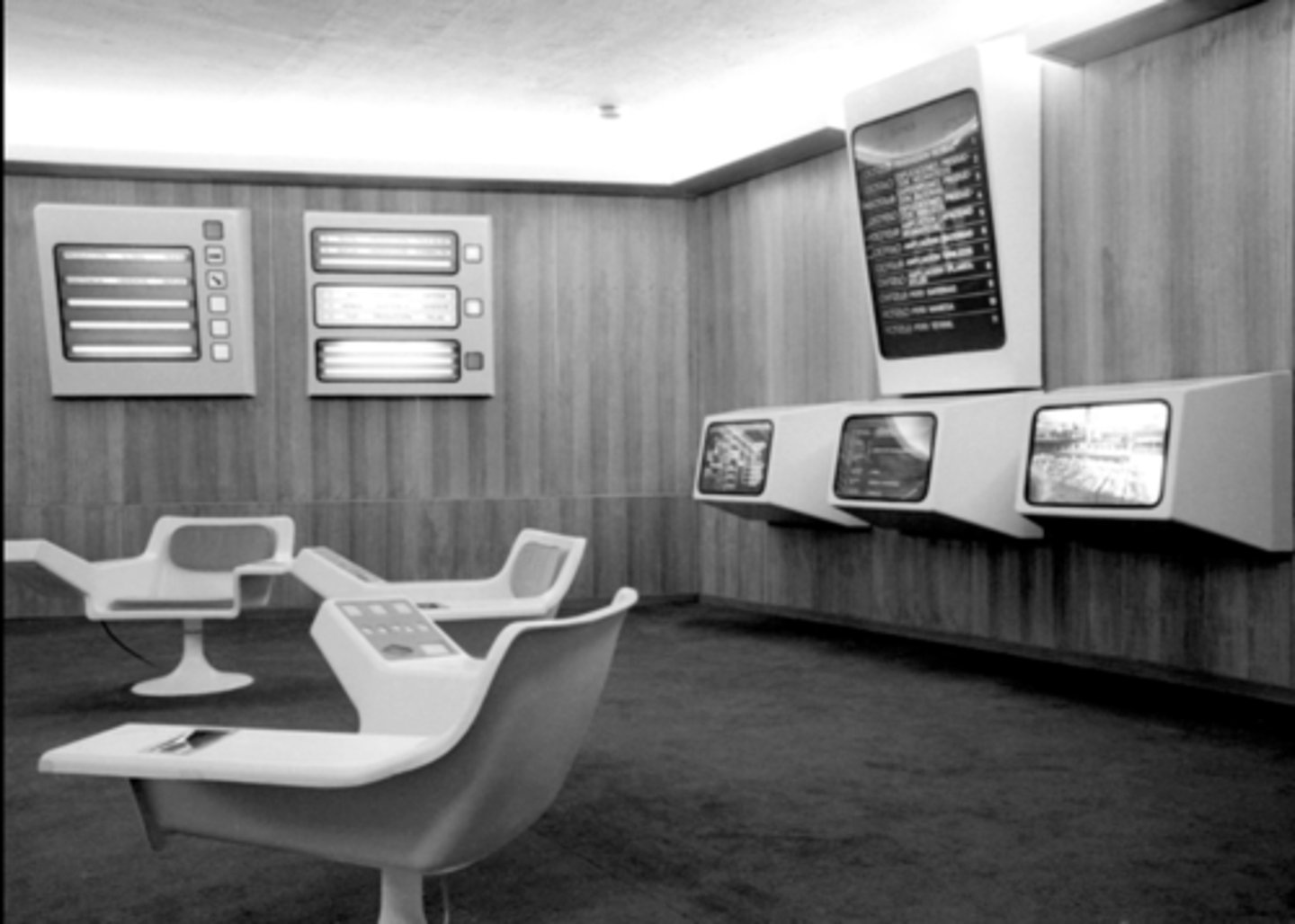
Model T
First mass-production automobile
Before this, cars were primarily custom-built, luxury goods
Car production started in Europe around 1890
Detroit became the hub of automobile production
Detroit changed the status of the car as a cultural object
Changed how people were able to access and see the world
Used for travel, work, leisure, etc.
The success of the Model T had to do with design
It's not a particularly attractive car in the modern sense (parts are not as clean and under control as a lot of modern designs are)
Disparate parts of the car are all visible and bolted together
This lack of "packaging of parts" allows for more efficient construction and repair, so it did have some benefits
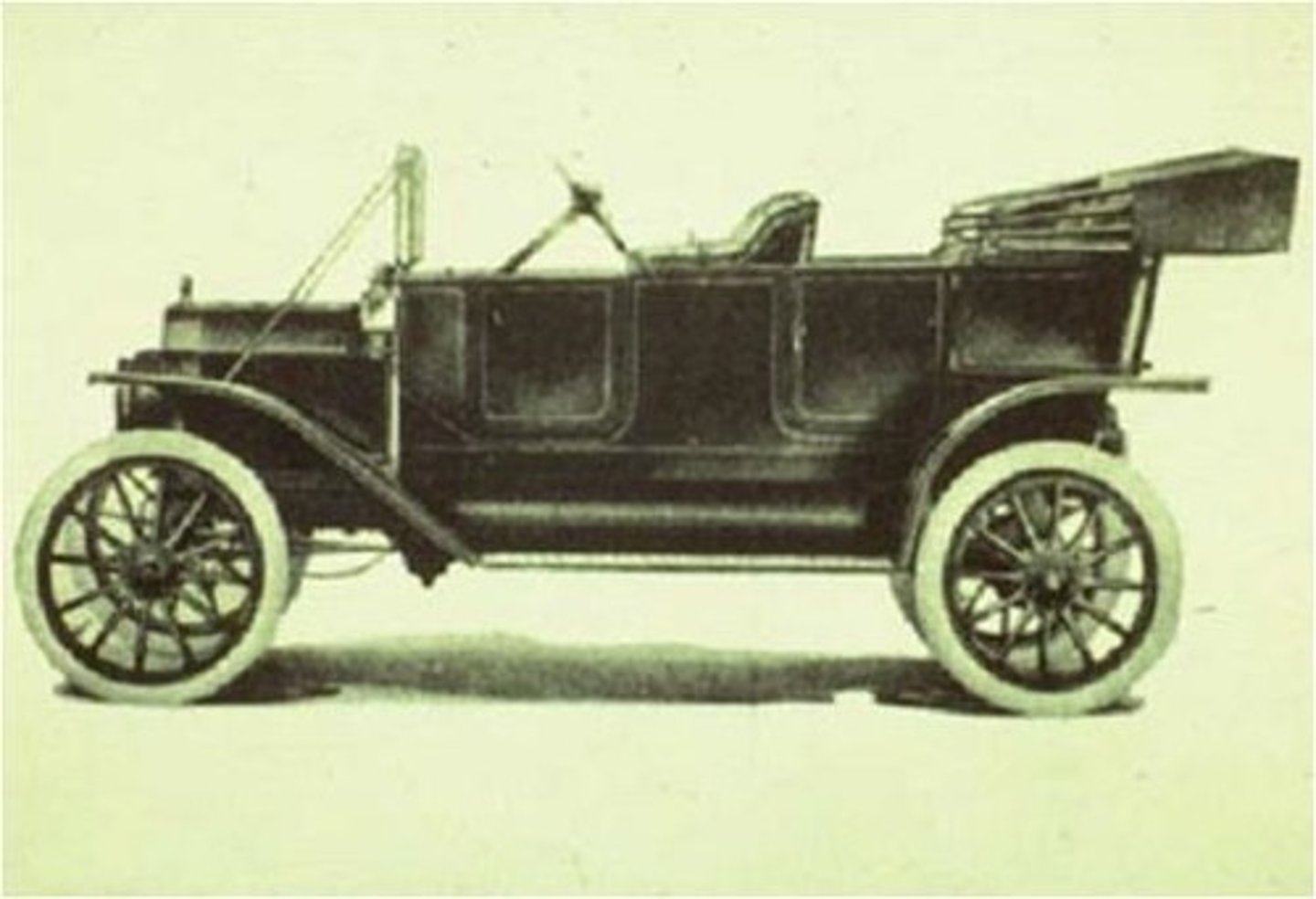
Kdf Wagen ("Strength Through Joy Car")
(Volkswagen Bug) - became associated with hippie culture, and leisure culture in the U.S. in the modern-day
Its creation as very different
It was developed during the Nazi regime to promote patriotism
Designed in a visual unity in a more modernist approach
Empahzised certain qualities such as speed
This design approach was popularized worldwide in the 1930's (called "streamlining") → consumers want their objects to look fast
Car name translates to "Strength through Joy"
Nazi strength through consumer joy
The image shows off the car, the highway system for fast and easy travel, an archetypal example of a German landscape, an image of race, gender, and class (white nuclear family) → all intended to promote an image of German superiority

"Indian Detour"
Meant to evoke Spanish, colonial, and indigenous architecture
Tourists had the option to take a "Indian detour"
White tourists drive out to areas in "carefully controlled encounters with Native individuals"
The car is central to this idea of control. The purpose was to allow white people to see Pueblo architecture and art. Evocations of aspects of indigenous arts
Image: Taos Pueblo. White people were interested in the material qualities of Pueblo architecture, geometric look and materiality (adobe brick). Spanish colonization was a long, violent ordeal for the Pueblo
Hopi House, part of the Pueblo Revival style.
Reviving something dead, but Pueblo people have always been around. House had stacked ladders as exotic, easily recognizable symbols for white people
Hopi House was also a gift shop
Hopi House sales rooms, a recreation of Hopi culture with "real Hopi people" employed for your viewi
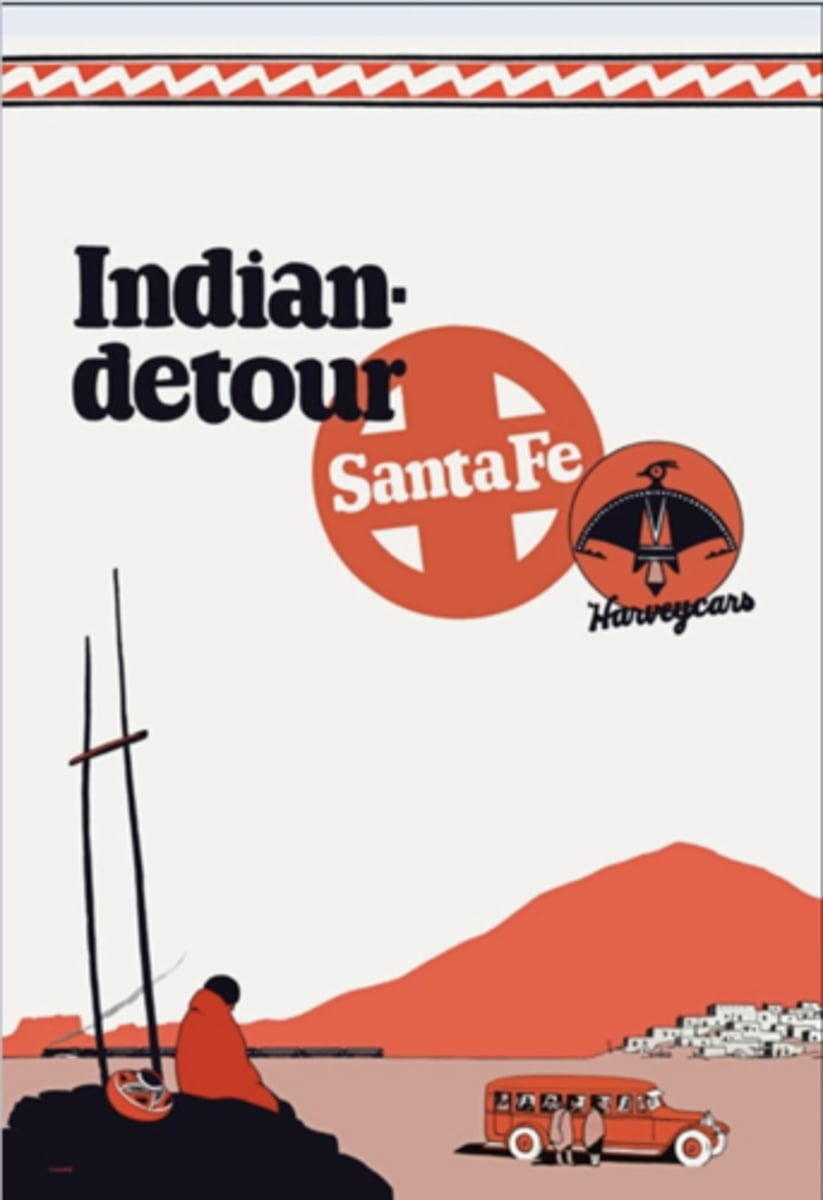
The Green Book
Published by a black author for black automobile tourists
Created during an era of both rising black prosperity and Jim Crow
A lot of automobile tourist sites were segregated or not open to black tourists
The book is intended to "facilitate black tourism by designing a system to convey information of available resources"
Lists of restaurants, bars, hotels, etc. were listed by state
Graphics conveyed the quality of experience that the book wanted to facilitate
The Negro Motorist, 1957
The cover is an image of the system of roadways
Published a year after the U.S. began its highway construction system
Represented smooth, fast, uninterrupted travel
Example of a modernist work of design - highly controlled and intended to make the world more efficient
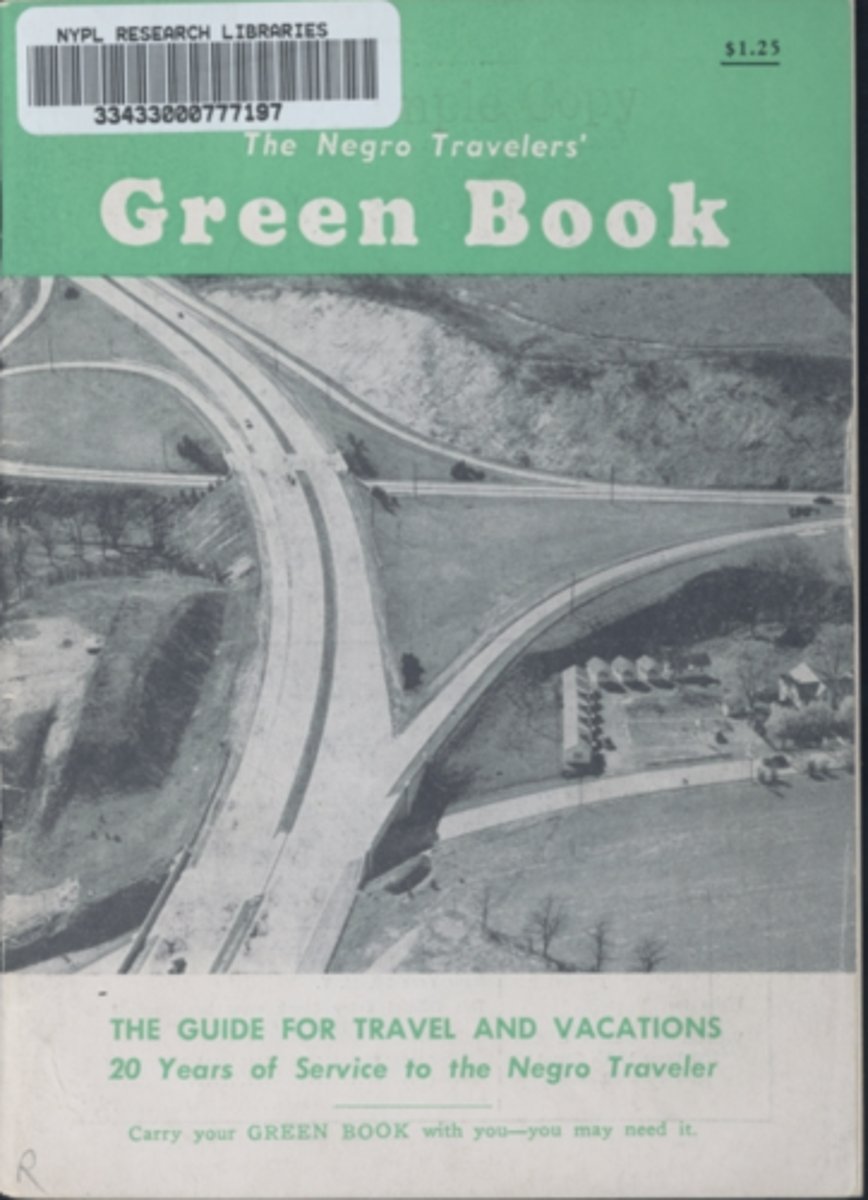
Maria
Car named after Maria Martinez
Blackware was popular in the tourist market
The Martinezs used this popularity to reinforce and strengthen local and artistic traditions
Has decorative motifs taken from the tradition of blackware pottery and Pueblo art
Simpson grew up around this style of Pueblo pottery
She trained in autobody design and combined local artistic culture with her practice
"The idea is that [the car] is loud and it takes up space" - Simpson
Creates a performance with gender-queer, indigenous people wearing post-apocalyptic clothing and walking with the car as it plays a heartbeat-like sound
Represents a coming together of different histories - Spanish colonialism and Pueblo culture, low-rider culture and blackware pottery
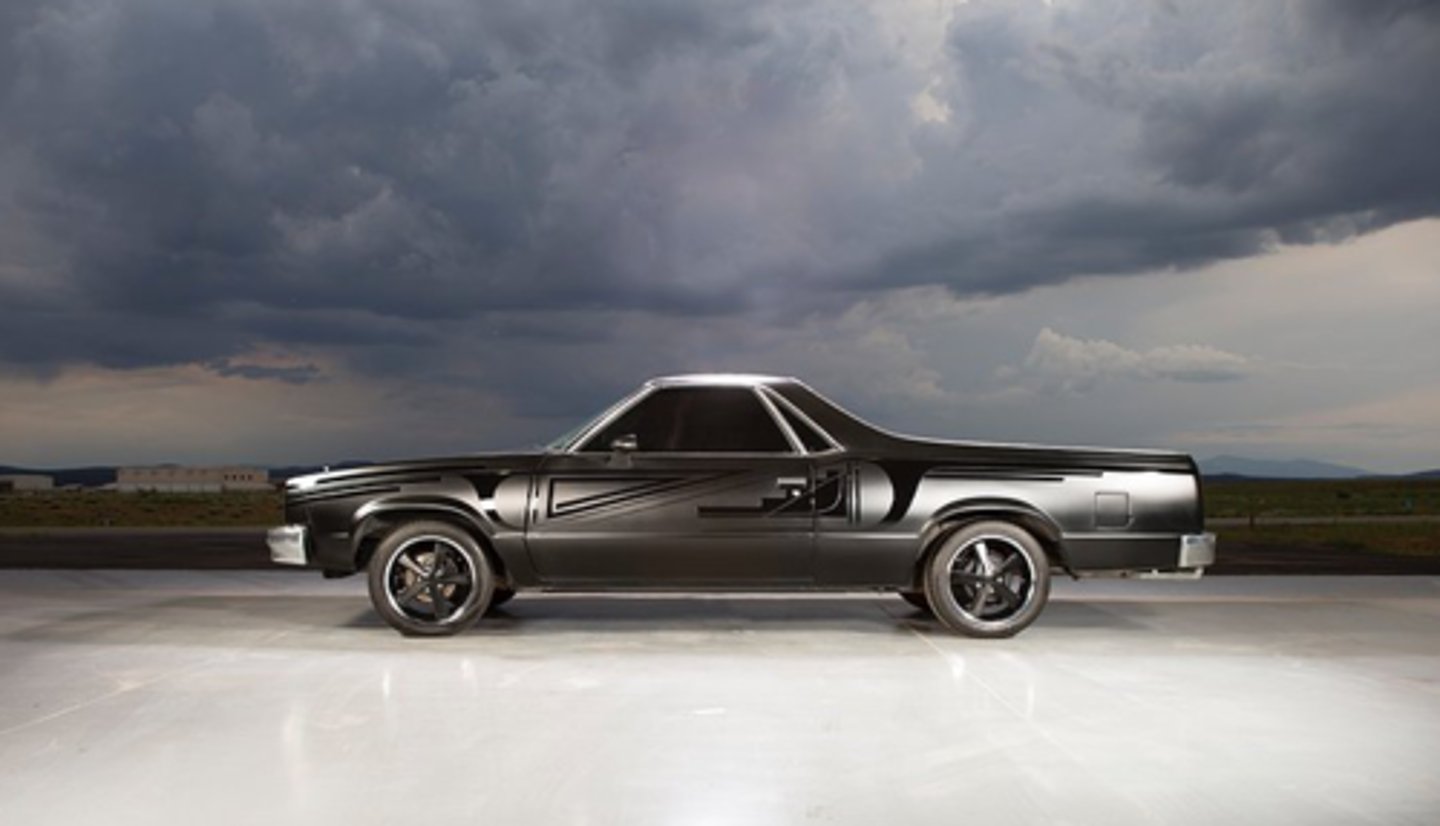
General Archive of the Indies, Seville, Spain
Talks about discovery as a find something already there and "invention is a jarring recognition of the previously unknown... a radical reconsideration of...the world itself and its inhabitants"
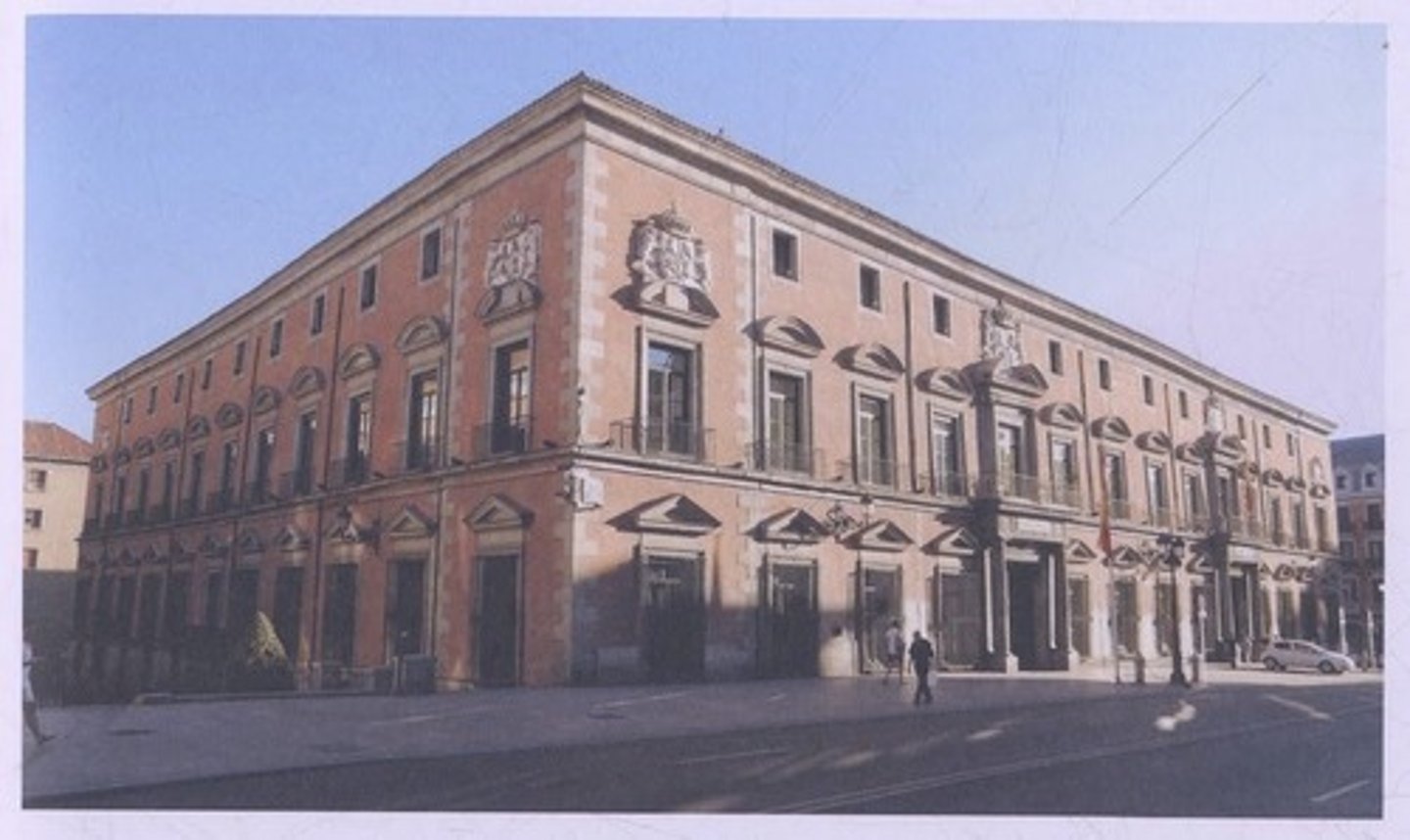
Document cases 3, 4, 5, and 6, (built from 1787 to 1788 by Blas Molner y Zamora) on the western wall of the eastern gallery of the Archive of the Indies,
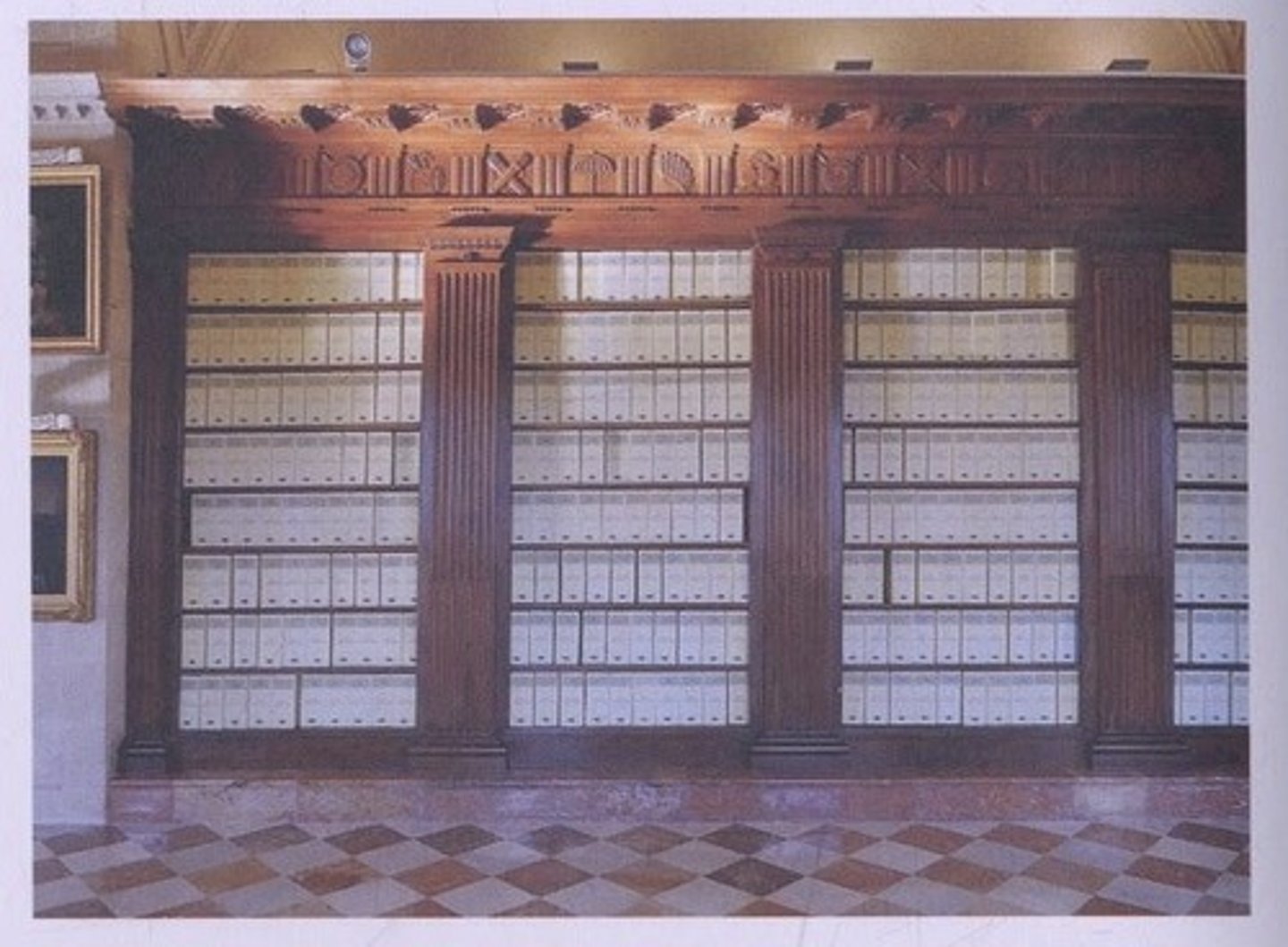
Photograph of Liz Beyer or Ise Gropis at the Bauhaus
The body of Lis Beyer: confident manner, existing within the pure space of the chair, bringing the body under its control, under the pure, utopian space
Mask: performative? Reenforces the idea of design as something purifying, echoes the frame of the chair
Takes away the identity of the sitter, genderless?
Reflects the modernist design aesthetic of the Bauhaus school - geometric forms and functionalism
The chair's design aims for purity of form and efficiency, with the sitter's body becoming integrated into the overall composition
Symbolizes the intersection of design, architecture, and human presence in the modernist era
Raises questions about the relationship between the human body and designed objects
Gender and identity in design
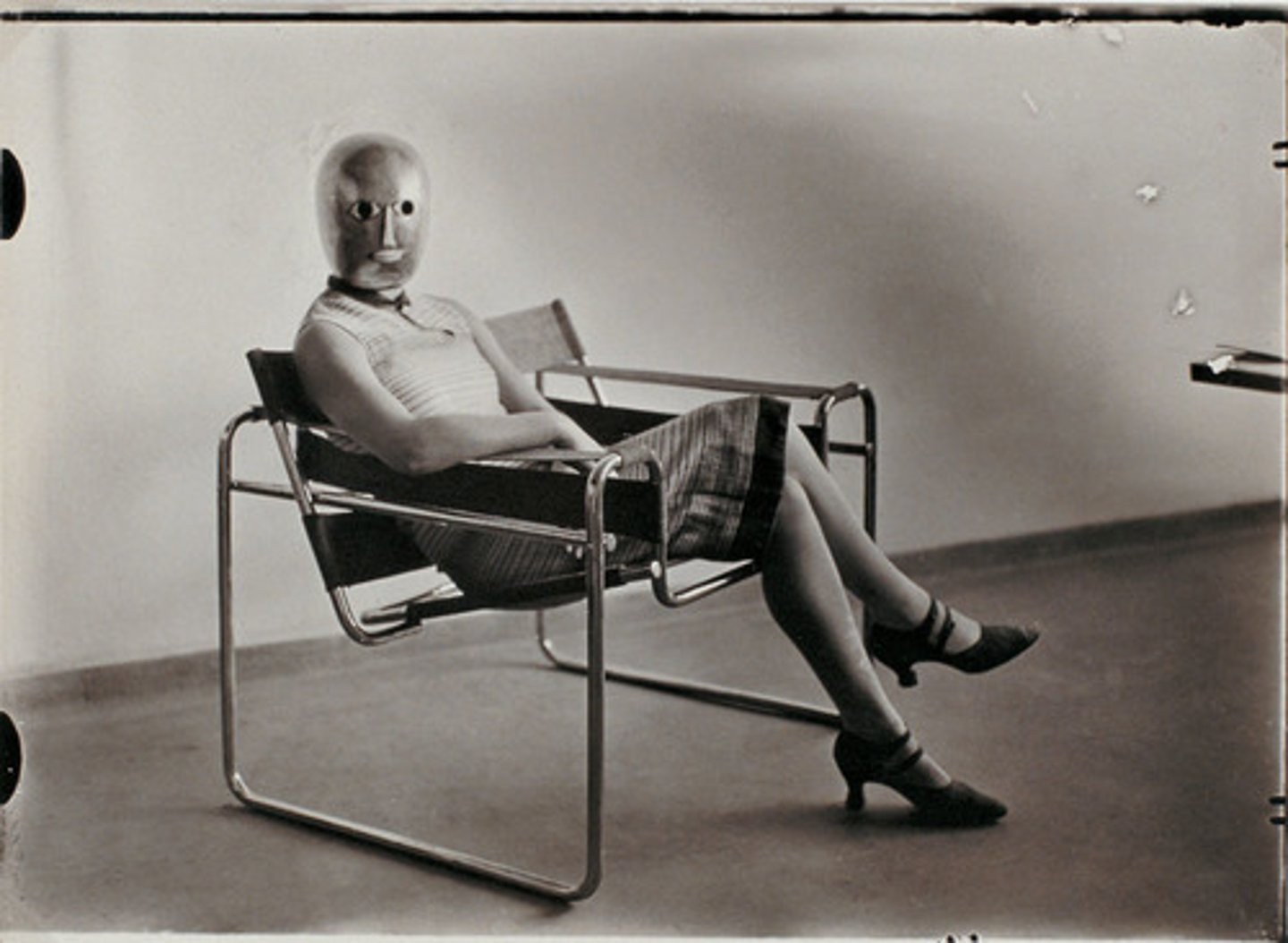
The Measure of Man: Human Factors in Design
Universal design in 1980s, how do we get 95% of people to benefit from this design. Crip design movement, identifying term crip
Rather than designing for ways to hide bodies, designing for ways to celebrate those who are different

ILZRO House (Diana Harrison in the Kitchen)
Modernist house, crisp geometry
Physical impairments of his wife in mind - International Lead and Zinc... Lead/Zinc panels for architectyre
Countertops with different heights, multiple sinks, special storage drawers
Frankfurt kitchen inspiration?
Modernist residence with a focus on accessibility and functionality for individuals with physical impairments
Demonstrates the usability and adaptability of the space for someone with mobility challenges
Countertops with adjustable heights, multiple sinks, and specialized storage drawers
Wanted to create environments that are inclusive and barrier-free
Demonstrates the integration of design and social advocacy
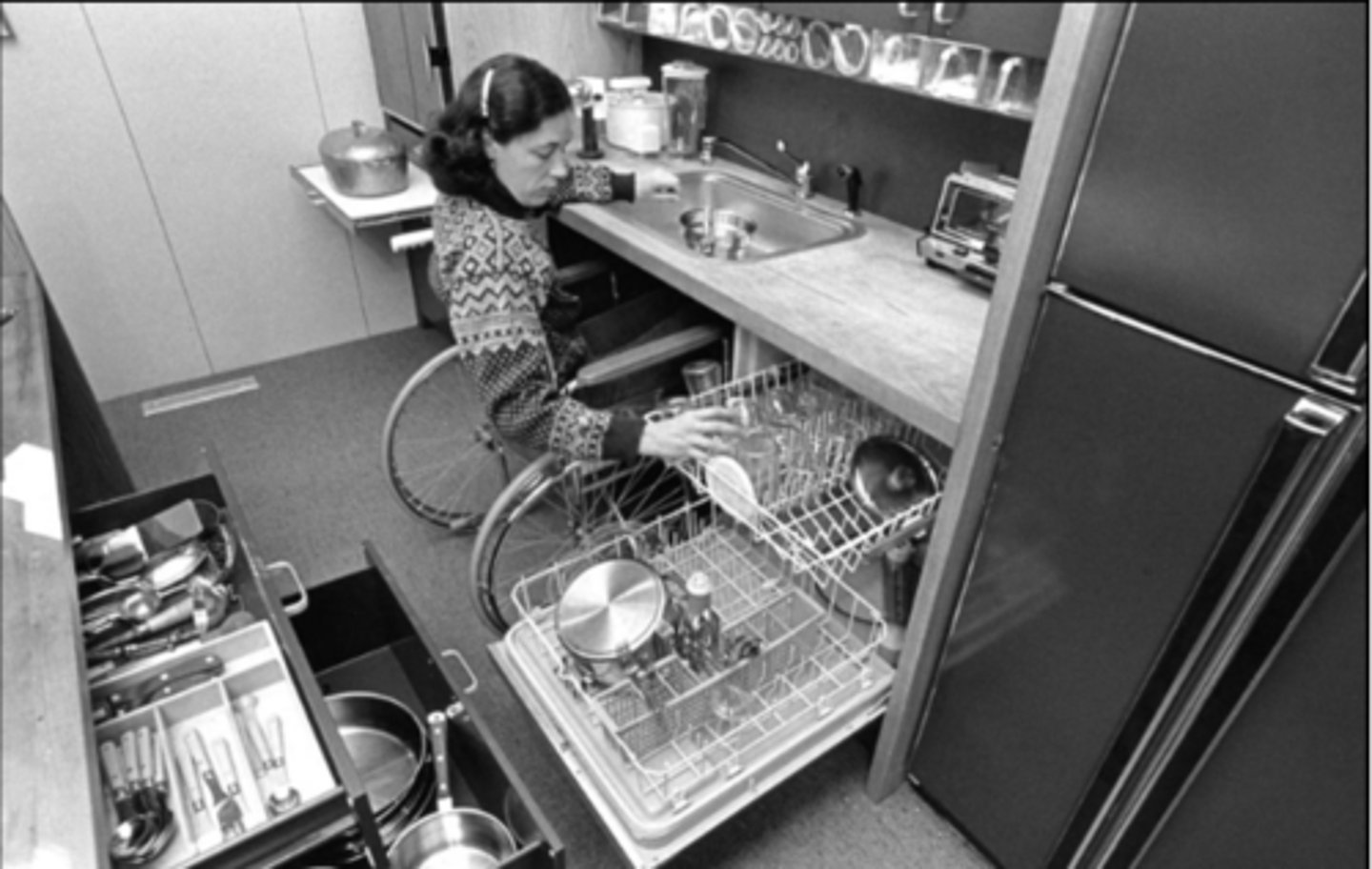
"Engineering at Home" website
Cindy - things she developed using tools at home to accommodate her own specific needs
Gripping devices
Challenging basic assumptions of design for disabled users... "Moved by Cindy's story - challenges "who can engineer? What is engineering? Why does this matter?" Showcases DIY solutions and adaptive technologies developed by individuals with disabilities
Resources, tutorials, and community forums
Empowers individuals to engineer personalized assistive devices
Offers insights into the lived experiences of people with disabilities and challenges conventional assumptions about design and engineering
Participatory approach to design
Users actively contribute to the creation of tools and technologies that meet their specific needs
Highlighting the creativity and resourcefulness of individuals with disabilities
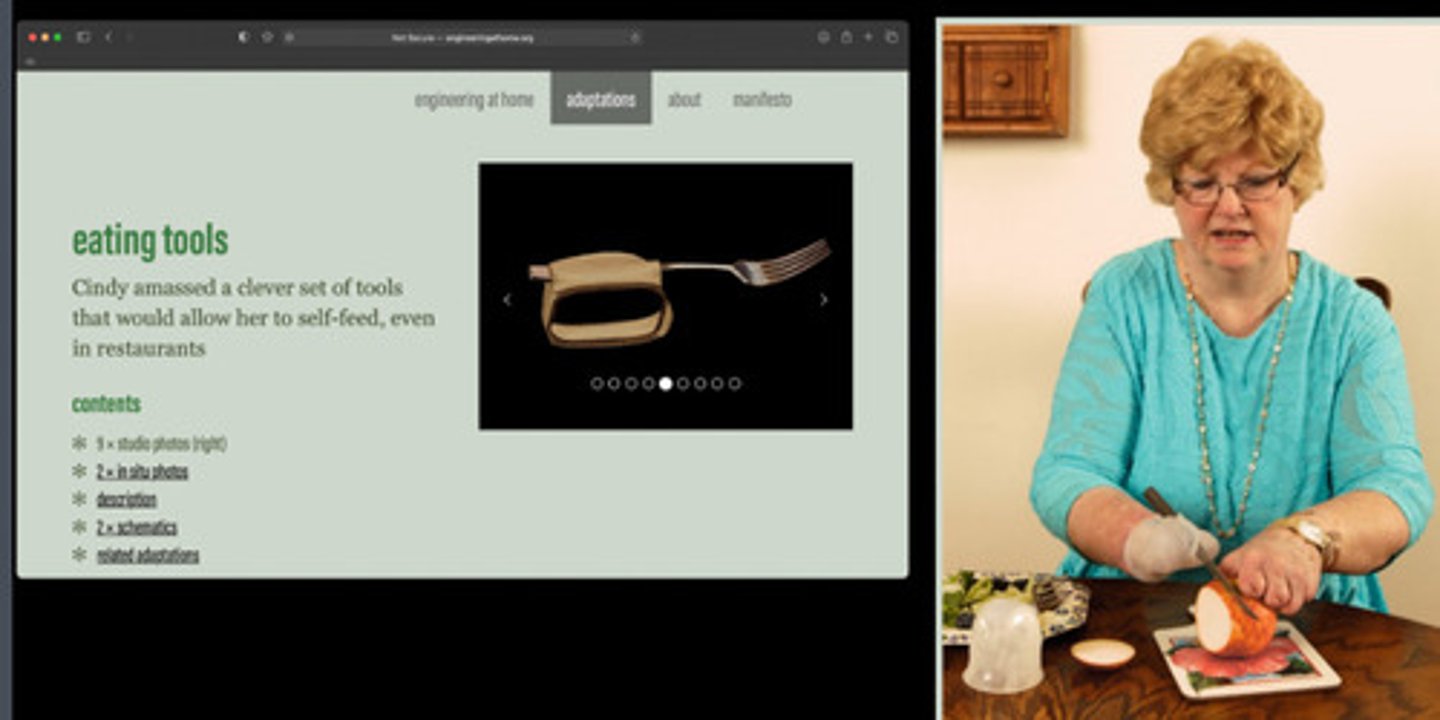
Rebirth Garments and Radical Visibility Zine
Radical visibility
Gender non-conforming wearables - social advocacy
QueerCrip Dress reform manifesto
Prosthetics that are subversive... Fantastically bright colors! Exuberant geometry!
Joy in clothing!!!
Clothing line founded that specializes in gender non-conforming wearables and adaptive fashion for people with disabilities
The Radical Visibility Zine
Accompanies the clothing line, featuring stories, artwork, and manifestos that celebrate disability pride and challenge societal norms of beauty and identity
Fosters a sense of community and empowerment through fashion activism
Aligns with the broader movement towards disability justice and intersectional activism, promoting social change through art, design, and storytelling
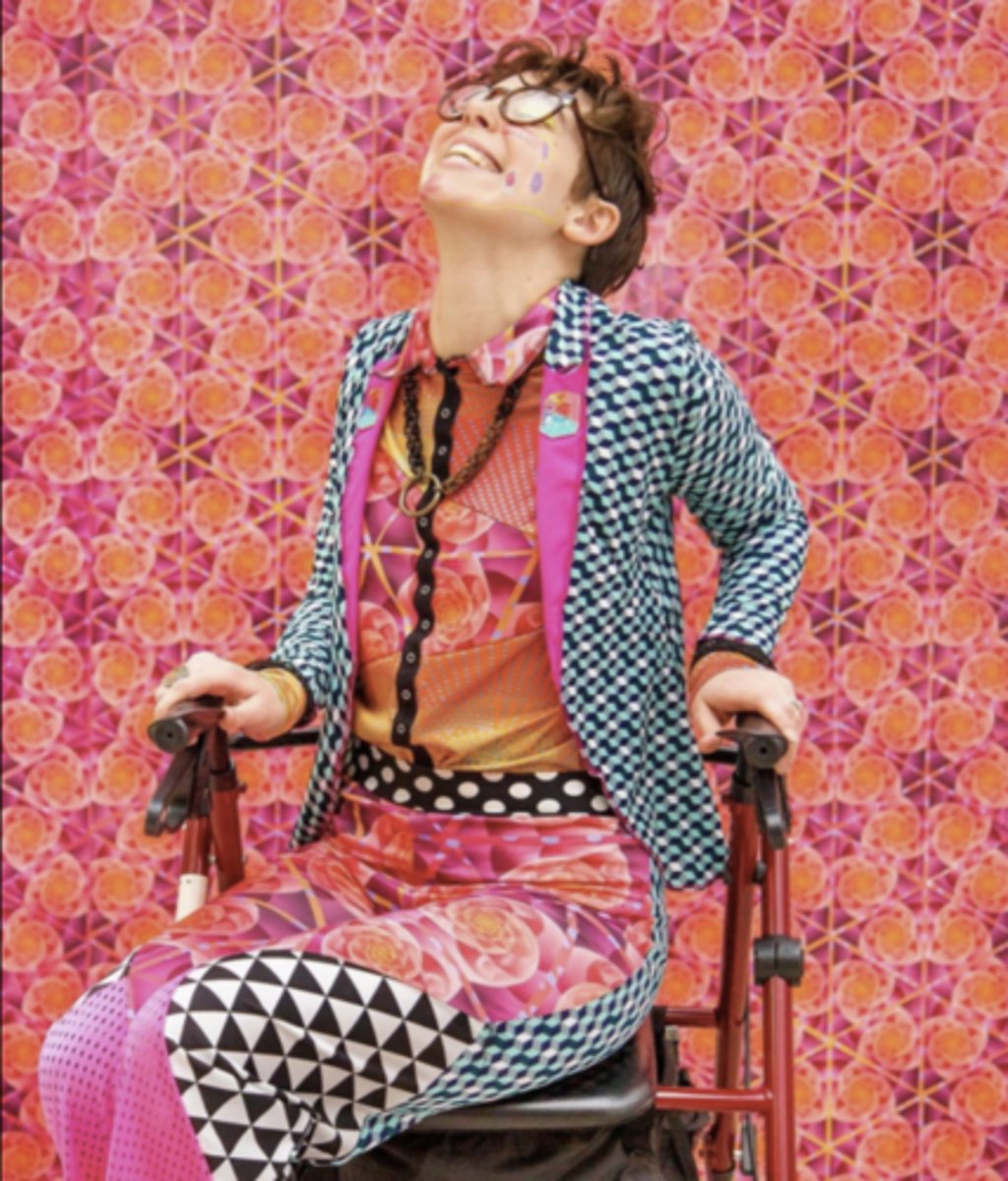
Nightingale-Brown House (1792), College Hill, now part of Brown University
The house is architecturally significant as one of the largest surviving wood-frame houses of the 18th century, and is historically significant as the longtime seat (from 1814 to 1985) of the Brown family, whose members have been leaders of the Providence civic, social, and business community since the 17th century,
Preserved beautifully, costs millions of dollars
National landmark status (only one of a few in the country)
This is a typical example of what we think about when we think about preservation
Preservation
Maintaining a place or object to uphold its value
Capitalist Design
Industrial Design
Craft
Preservation
Archive
UNESCO
Art
Colonialism
Universal Design
Green Book Travel Guide
World’s Fair
Radical Visibility
Disability Agency
Displacement
Sensuality